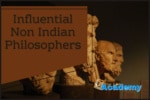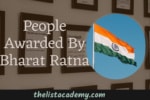96 Popular Indian Philosophers
In the West, where philosophy and religion are different from each other, while the philosophy of the East is deeply connected with religion, in the East there is often only one person, a philosopher and a philosopher. Indian religion and philosophy are connected in such a way that they cannot be introduced. This is the reason that in our list you will see some people who have a deep connection with religion.
‘Knowledge of the Self is the one direct means for liberation.’ One of India’s greatest philosophers, Adi Shankara, has said it, and what a beautiful piece of wisdom it is. Really, India is a great land where many profound thinkers and philosophers took birth. They are behind some of the deep ideas that still mesmerize people all over the world. Here’s a list of a few famous philosophers from India. These philosophers have shaped much of the beliefs and ideologies that people today live on. The main aim of these philosophers was to bring global peace, humanity, and equity in turbulent times. These thinkers are key figures in introducing the Indian philosophy of Yoga, Vedanta, Nyaya, Vaisheshika, Samkhya, and Self-Knowledge to the western world. And through their works, the world is still learning Indian philosophical views on the nature of the world (cosmology), logic, the nature of reality (metaphysics), ethics, the nature of knowledge (epistemology), and theology.
Krishna

Krishna is a major deity in Hinduism. He is worshipped as the eighth avatar of the god Vishnu and also as the supreme God in his own right. He is the god of compassion, tenderness, love and is one of the most popular and widely revered among Indian divinities. Krishna’s birthday is celebrated every year by Hindus on Krishna Janmashtami according to the lunisolar Hindu calendar, which falls in late August or early September of the Gregorian calendar. Krishna is usually depicted with a flute in his hand.
The anecdotes and narratives of Krishna’s life are generally titled as Krishna Leela. He is a central character in the Mahabharata, the Bhagavata Purana and the Bhagavad Gita, and is mentioned in many Hindu philosophical, theological, and mythological texts. They portray him in various perspectives: a god-child, a prankster, a model lover, a divine hero, and as the universal supreme being. His iconography reflects these legends, and shows him in different stages of his life, such as an infant eating butter, a young boy playing a flute, a young boy with Radha or surrounded by women devotees, or a friendly charioteer giving counsel to Arjuna.The synonyms of Krishna have been traced to 1st millennium BCE literature.
Read More About Krishna / Source
Chanakya
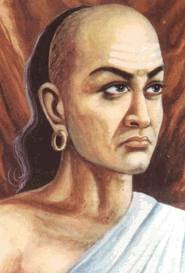
Chanakya was an ancient Indian teacher, philosopher, economist, jurist and royal advisor. He is traditionally identified as Kauṭilya or Vishnugupta, who authored the ancient Indian political treatise, the Arthashastra, a text dated to roughly between the 3rd century BCE and the 3rd century CE. As such, he is considered the pioneer of the field of political science and economics in India, and his work is thought of as an important precursor to classical economics. His works were lost near the end of the Gupta Empire in the 6th century CE and not rediscovered until the early 20th century.Chanakya assisted the first Mauryan emperor Chandragupta in his rise to power. He is widely credited for having played an important role in the establishment of the Maurya Empire. Chanakya served as the chief advisor to both emperors Chandragupta and his son Bindusara.
Read More About Chanakya / Source
Gautama Buddha
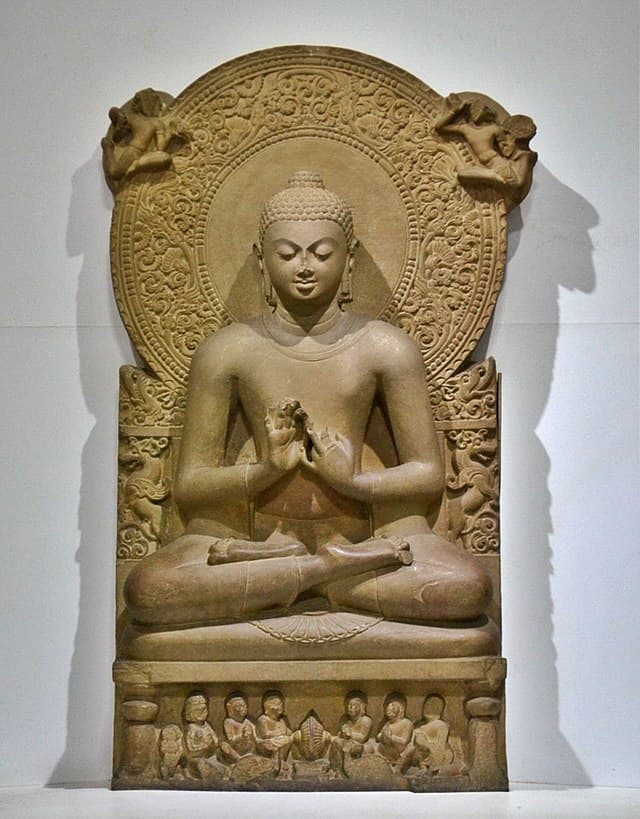
The Buddha (also known as Siddhartha Gotama or Siddhārtha Gautama or Buddha Shakyamuni) was a philosopher, mendicant, meditator, spiritual teacher, and religious leader who lived in Ancient India (c. 5th to 4th century BCE). He is revered as the founder of the world religion of Buddhism, and worshipped by most Buddhist schools as the Enlightened One who has transcended Karma and escaped the cycle of birth and rebirth. He taught for around 45 years and built a large following, both monastic and lay. His teaching is based on his insight into duḥkha (typically translated as “suffering”) and the end of dukkha – the state called Nibbāna or Nirvana.
The Buddha was born into an aristocratic family in the Shakya clan but eventually renounced lay life. According to Buddhist tradition, after several years of mendicancy, meditation, and asceticism, he awakened to understand the mechanism which keeps people trapped in the cycle of rebirth. The Buddha then traveled throughout the Ganges plain teaching and building a religious community. The Buddha taught a middle way between sensual indulgence and the severe asceticism found in the Indian śramaṇa movement. He taught a spiritual path that included ethical training and meditative practices such as jhana and mindfulness. The Buddha also critiqued the practices of Brahmin priests, such as animal sacrifice.
Read More About Gautama Buddha / Source
Shandilya (Rishi)
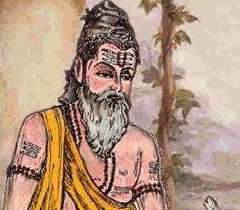
Shandilya is a Brahmin gotra, named after the Rishi Shandilya, specifying that individuals of the gotra have Shandilya as one of their patrilineal ancestors. Shandilya is actually a historical Brahmin sage, but later he has started titles like Vashishtha, Vishwamitra and Vyasa.
Read More About Shandilya (Rishi) / Source
Mahavira Swami
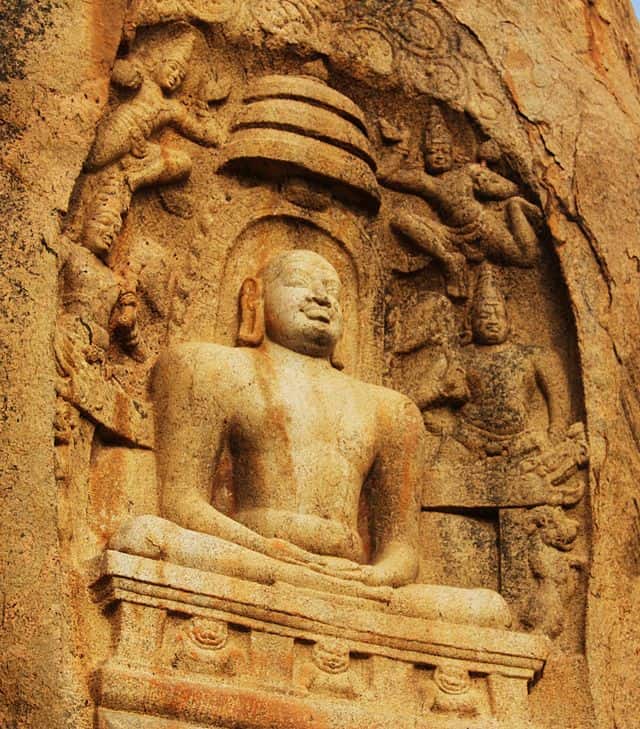
Mahavira, also known as Vardhamana or Kevala was the 24th Tirthankara of Jainism. He was the spiritual successor of 23rd Tirthankara Parshvanatha. Mahavira was born in the early part of the 6th century BC into a royal Kshatriya Jain family in Bihar, India. His mother’s name was Trishala and father’s name was Siddhartha. They were lay devotees of Parshvanatha. Mahavira abandoned all worldly possessions at the age of about 30 and left home in pursuit of spiritual awakening, becoming an ascetic. Mahavira practiced intense meditation and severe austerities for 12 and half years, after which he attained Kevala Gyan (omniscience). He preached for 30 years and attained Moksha (salvation) in the 6th century BC, although the year varies by sect.
Historically, Mahavira, who preached Jainism in ancient India, was an older contemporary of Gautama Buddha. Scholars variously date him from 6th-5th century BC and his place of birth is also a point of dispute among them.
Mahavira taught that observance of the vows of ahimsa (non-violence), satya (truth), asteya (non-stealing), brahmacharya (chastity), and aparigraha (non-attachment) are necessary for spiritual liberation. He taught the principles of Anekantavada (many-sided reality): syadvada and nayavada. Mahavira’s teachings were compiled by Indrabhuti Gautama (his chief disciple) as the Jain Agamas.
Read More About Mahavira Swami / Source
Pravahana Jaivali
Pravahana Jaivali was a king of Panchala during the Late Vedic period (8th or 7th century BCE), mentioned in the Brihadaranyaka Upanishad (Vi.ii.9-13) and the Chandogya Upanishad (V.4-8). Like King Ajatashatru of Kashi and King Asvapati Kaikeya of Madra, he is depicted as a major Hindu philosopher-king. He was the contemporary of King Janaka of Videha, and is among the most famous kings of Uttara Pañchāla-rattha who ruled from Kampila-nagara, the others being Kraivya, Keśin Dālbhya, Śona Sātrāsāha and Durmukha. He teaches Svetaketu, son of Uddalaka Aruni who was a disciple of Dhaumya Ayoda (Mahabharata I.iii.20), his celebrated Panchagni Vidya i.e. the “Doctrine of the Five Fires” that explains the process of rebirth, which is an upasana. This doctrine is in answer to the five questions of the King. And, thus taught the ‘two-path doctrine of transmigration’, which knowledge had never been in possession of the Brahmins.Pravahana Jaivali, who was well-versed in udgitha, held that the Universe exhibits at every stage the principle of sacrifice in as much as the heaven by itself is a great altar in which the sun is burning as fuel from the oblation that is offered in this sacrifice, namely shraddha, rises the Moon; looking at the sky again it is seen that parjanya is the great altar in which the year is burning as fuel from the oblation offered in this sacrifice, namely the Moon, rises Rain; then again the whole world is a great altar in which the earth burns as fuel from the oblation offered in this sacrifice, namely Rain, rises Food; man himself is a great altar in which the opened mouth is the fuel from the oblation offered in his sacrifice, namely Food, rises Seed; and finally woman herself is a great altar in which Seed being offered as an oblation, rises Man. This is his celebrated “Doctrine of the Five Fires”.
Read More About Pravahana Jaivali / Source
Kashyapa

Kashyapa is a revered Vedic sage of Hinduism. He is one of the Saptarishis, the seven ancient sages of the Rigveda, as well as numerous other Sanskrit texts and Indian mythologies. He is the most ancient Rishi listed in the colophon verse in the Brihadaranyaka Upanishad.Kashyapa is a common ancient name, referring to many different personalities in the ancient Hindu and Buddhist texts.
Read More About Kashyapa / Source
Makkhali Gosala (Maskarī Gośālīputra)

Makkhali Gosala was a contemporary of Mahavir Swami, initially he took the discipleship of Mahavir Swami, but due to differences later, he established an independent sect, called the Ajivak Sampradaya.
Read More About Makkhali Gosala (Maskarī Gośālīputra) / Source
Swami Vivekananda
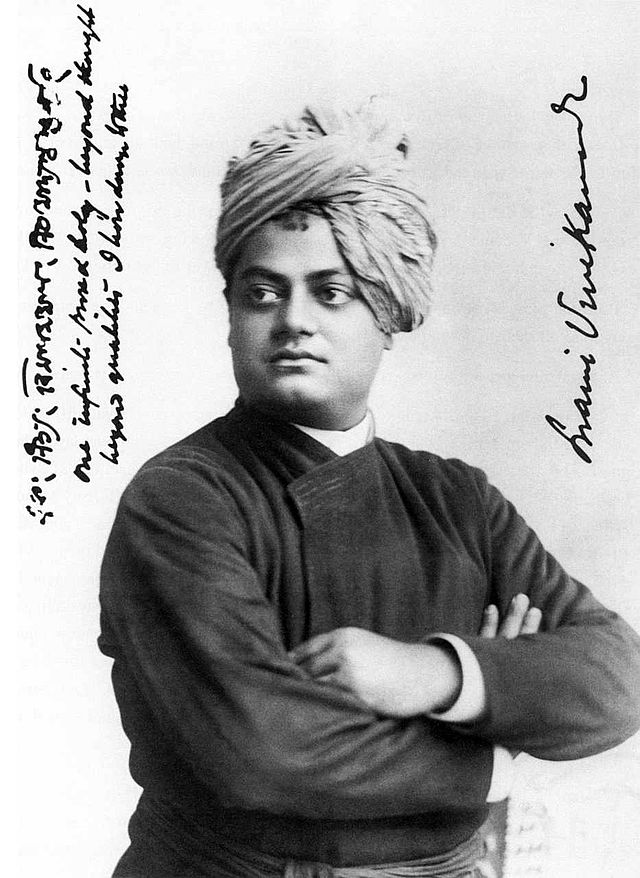
Swami Vivekananda ( 12 January 1863 – 4 July 1902), born Narendranath Datta), was an Indian Hindu monk. He was a chief disciple of the 19th-century Indian mystic Ramakrishna. He was a key figure in the introduction of the Indian philosophies of Vedanta and Yoga to the Western world, and is credited with raising interfaith awareness, bringing Hinduism to the status of a major world religion during the late 19th century. He was a major force in the revival of Hinduism in India, and contributed to the concept of Indian nationalism as a tool to fight against the British empire in colonial India. Vivekananda founded the Ramakrishna Math and the Ramakrishna Mission. He is perhaps best known for his speech which began with the words “Sisters and brothers of America …,” in which he introduced Hinduism at the Parliament of the World’s Religions in Chicago in 1893.
Born into an aristocratic Bengali Kayastha family of Calcutta, Vivekananda was inclined towards spirituality. He was influenced by his guru, Ramakrishna, from whom he learnt that all living beings were an embodiment of the divine self; therefore, service to God could be rendered by service to humankind. After Ramakrishna’s death, Vivekananda toured the Indian subcontinent extensively and acquired first-hand knowledge of the prevailing in British India. He later travelled to the United States, representing India at the 1893 Parliament of the World’s Religions.
Read More About Swami Vivekananda / Source
Ajita Kesakambali
Ajita Kesakambali was an ancient Indian philosopher in the 6th century BC. He is considered to be the first known proponent of Indian materialism, and forerunner to the Charvaka school. He was probably a contemporary of the Buddha and Mahavira. It has frequently been noted that the doctrines of the Lokayata school were considerably drawn from Ajita’s teachings.
There is no evidence to support that Kesamkambali was a hedonist, because he led a very simple life. He wore a garment made of hair and lived an ascetic lifestyle. He did not wear precious ornaments, did not surround himself with beautiful women, and did not live in gluttony. Hedonism was used as a “straw man” argument by opponents of Charvaka.
Read More About Ajita Kesakambali / Source
Jayarasi Bhatta
Jayarāśi Bhaṭṭa (fl. c. 800) was an Indian philosopher and the author of Tattvopaplavasiṃha (tattva-upa.plava-siṃha “The Lion that Devours All Categories”/”The Upsetting of All Principles”) in which he professed radical skepticism, which posits the impossibility of knowledge. In his work, he attempts to show the contradictions of various philosophical positions as well as the counter positions. This methodology makes him aligned to the Ajñanins of ancient India and Nagarjuna. The text was discovered in a single manuscript in the 20th century. Its original 1940 edition attributed it to the materialist Charvaka school, but scholarly opinion on this point remains divided. The work is primarily epistemological in nature, reminiscent of the sceptical philosophy of David Hume.
Read More About Jayarasi Bhatta / Source
Bodhidharma
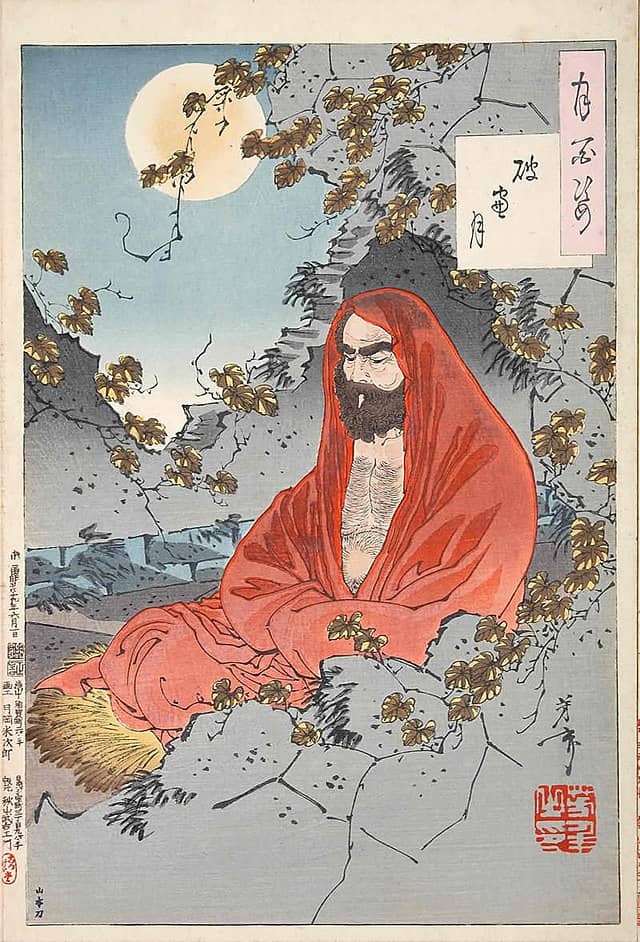
Bodhidharma was a semi-legendary Buddhist monk who lived during the 5th or 6th century. He is traditionally credited as the transmitter of Chan Buddhism to China, and regarded as its first Chinese patriarch. According to Chinese legend, he also began the physical training of the monks of Shaolin Monastery that led to the creation of Shaolin kungfu. In Japan, he is known as Daruma. His name means “dharma of awakening (bodhi)” in Sanskrit.Little contemporary biographical information on Bodhidharma is extant, and subsequent accounts became layered with legend and unreliable details.According to the principal Chinese sources, Bodhidharma came from the Western Regions, which refers to Central Asia but may also include the Indian subcontinent, and is decribed as either a “Persian Central Asian” or a “South Indian […] the third son of a great Indian king.”
Throughout Buddhist art, Bodhidharma is depicted as an ill-tempered, profusely-bearded, wide-eyed non-Chinese person. He is referred as “The Blue-Eyed Barbarian” (Chinese: 碧眼胡; pinyin: Bìyǎnhú) in Chan texts.Aside from the Chinese accounts, several popular traditions also exist regarding Bodhidharma’s origins.The accounts also differ on the date of his arrival, with one early account claiming that he arrived during the Liu Song dynasty (420–479) and later accounts dating his arrival to the Liang dynasty (502–557). Bodhidharma was primarily active in the territory of the Northern Wei (386–534).
Read More About Bodhidharma / Source
Raghunatha Siromani
Raghunatha Shiromani (c. 1477–1547) was an Indian philosopher and logician. He was born at Nabadwip in present-day Nadia district of West Bengal state. He was the grandson of Śulapāṇi (c. 14th century CE), a noted writer on Smṛti from his mother’s side. He was a pupil of Vāsudeva Sārvabhauma. He brought the new school of Nyaya, Navya Nyāya, representing the final development of Indian formal logic, to its zenith of analytic power.
Raghunatha’s analysis of relations revealed the true nature of number, inseparable from the abstraction of natural phenomena, and his studies of metaphysics dealt with the negation or nonexistence of a complex reality. His most famous work in logic was the Tattvacintāmaṇidīdhiti, a commentary on the Tattvacintāmaṇi of Gangeśa Upādhyāya, founder of the Navya Nyāya school.
Read More About Raghunatha Siromani / Source
Rajneesh (OSHO)
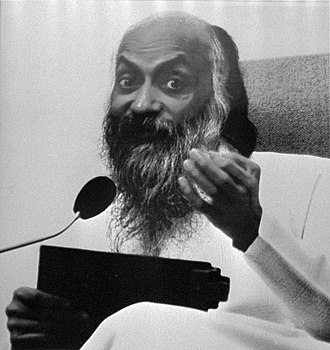
Rajneesh (born Chandra Mohan Jain, 11 December 1931 – 19 January 1990), also known as Acharya Rajneesh, Bhagwan Shri Rajneesh, and later as Osho, was an Indian godman, mystic, and founder of the Rajneesh movement.
During his lifetime, he was viewed as a controversial new religious movement leader and mystic. In the 1960s, he travelled throughout India as a public speaker and was a vocal critic of socialism, arguing that India was not ready for socialism, and that socialism, communism, and anarchism could evolve only when capitalism had reached its maturity. Rajneesh also criticised Mahatma Gandhi and the orthodoxy of mainstream religions. Rajneesh emphasised the importance of meditation, mindfulness, love, celebration, courage, creativity, and humour—qualities that he viewed as being suppressed by adherence to static belief systems, religious tradition, and socialisation. In advocating a more open attitude to human sexuality he caused controversy in India during the late 1960s and became known as “the sex guru”.In 1970, Rajneesh spent time in Mumbai initiating followers known as “neo-sannyasins”. During this period he expanded his spiritual teachings and commented extensively in discourses on the writings of religious traditions, mystics, bhakti poets, and philosophers from around the world. In 1974, Rajneesh relocated to Pune, where an ashram was established and a variety of therapies, incorporating methods first developed by the Human Potential Movement, were offered to a growing Western following.
Read More About Rajneesh (OSHO) / Source
Narayana Guru
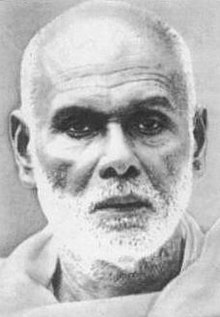
Narayana Guru (28 August 1855 – 20 September 1928) was a philosopher, spiritual leader and social reformer in India. He was born into a family that belonged to the Ezhava caste. He led a reform movement against the injustice in the caste-ridden society of Kerala in order to promote spiritual enlightenment and social equality.
Read More About Narayana Guru / Source
Vasishtha
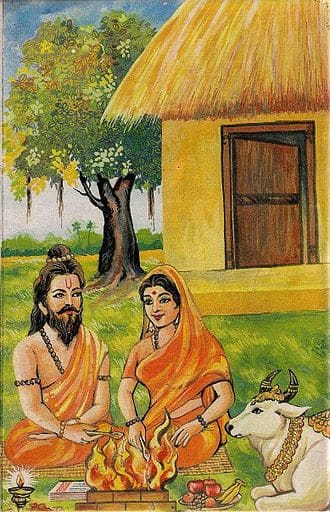
Vasishtha is one of the oldest and most revered Vedic rishis. He is one of the Saptarishis (seven great Rishis) of India. Vashistha is credited as the chief author of Mandala 7 of the Rigveda. Vashishtha and his family are mentioned in Rigvedic verse 10.167.4, other Rigvedic mandalas and in many Vedic texts. His ideas have been influential and he was called the first sage of the Vedanta school of Hindu philosophy by Adi Shankara.The Yoga Vashishtha, Vashishtha Samhita, as well as some versions of the Agni Purana and Vishnu Purana are attributed to him. He is the subject of many legends, such as him being in possession of the divine cow Kamadhenu and Nandini her child, who could grant anything to their owners. He is famous in Hindu legends for his legendary conflicts with sage Vishvamitra. In the Ramayana, he was the family priest of the Raghu dynasty and teacher of Lord Rama and his brothers.
Read More About Vasishtha / Source
Mahatma Gandhi
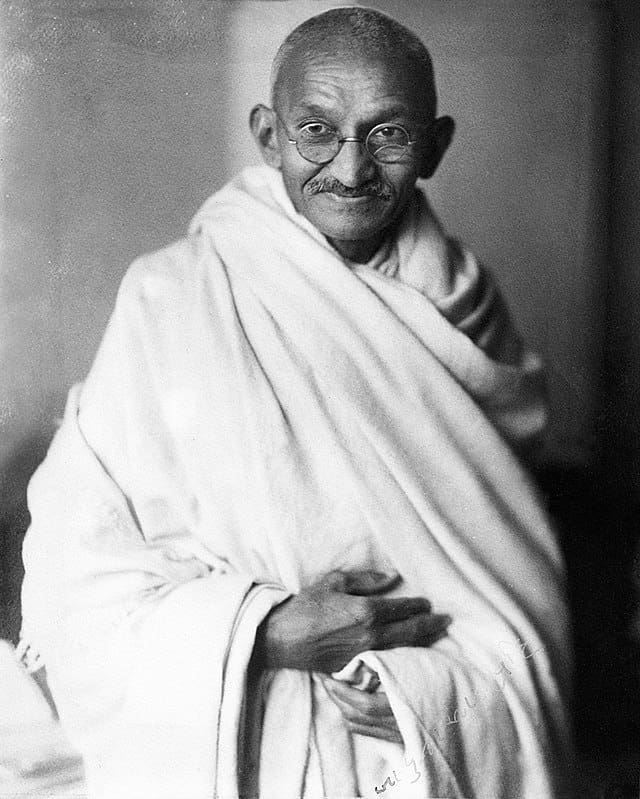
Mohandas Karamchand Gandhi ( 2 October 1869 – 30 January 1948), also known as Mahatma Gandhi, was an Indian lawyer, anti-colonial nationalist, and political ethicist, who employed nonviolent resistance to lead the successful campaign for India’s independence from British rule, and in turn inspired movements for civil rights and freedom across the world. The honorific Mahātmā (Sanskrit: “great-souled”, “venerable”), first applied to him in 1914 in South Africa, is now used throughout the world.Born and raised in a Hindu family in coastal Gujarat, western India, Gandhi trained in law at the Inner Temple, London, and was called to the bar at age 22 in June 1891. After two uncertain years in India, where he was unable to start a successful law practice, he moved to South Africa in 1893 to represent an Indian merchant in a lawsuit. He went on to stay for 21 years. It was in South Africa that Gandhi raised a family, and first employed nonviolent resistance in a campaign for civil rights. In 1915, aged 45, he returned to India. He set about organising peasants, farmers, and urban labourers to protest against excessive land-tax and discrimination.
Read More About Mahatma Gandhi / Source
Basava
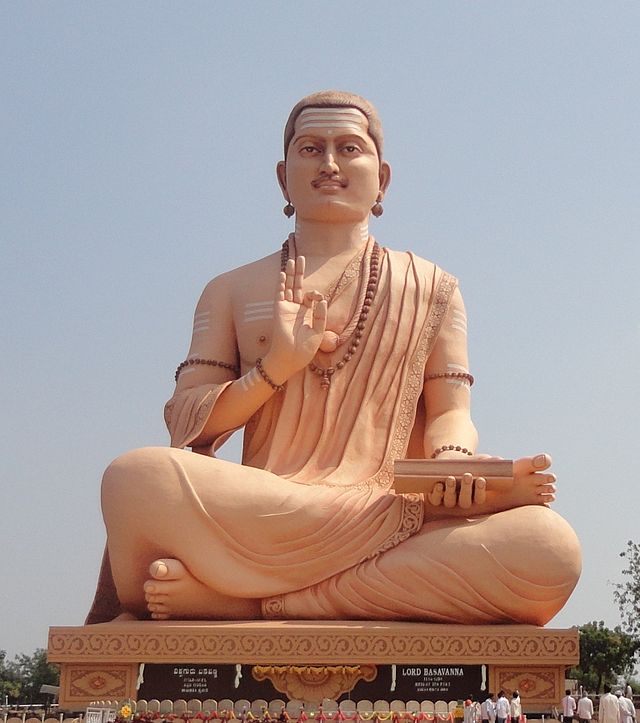
Basavanna was an Indian 12th-century statesman, philosopher, poet, Lingayat saint in the Shiva-focussed Bhakti movement, and Hindu Shaivite social reformer during the reign of the Kalyani Chalukya/Kalachuri dynasty. Basavanna was active during the rule of both dynasties but reached his peak of influence during the rule of King Bijjala II in Karnataka, India
.Basavanna spread social awareness through his poetry, popularly known as Vachanaas. Basavanna rejected gender or social discrimination, superstitions and rituals but introduced Ishtalinga necklace, with an image of the Shiva Liṅga, to every person regardless of his or her birth, to be a constant reminder of one’s bhakti (devotion) to Shiva. As the chief minister of his kingdom, he introduced new public institutions such as the Anubhava Mantapa (or, the “hall of spiritual experience”), which welcomed men and women from all socio-economic backgrounds to discuss spiritual and mundane questions of life, in open.The traditional legends and hagiographic texts state Basava to be the founder of the Lingayats. However, modern scholarship relying on historical evidence such as the Kalachuri inscriptions state that Basava was the poet philosopher who revived, refined and energized an already existing tradition.
Read More About Basava / Source
Kapila
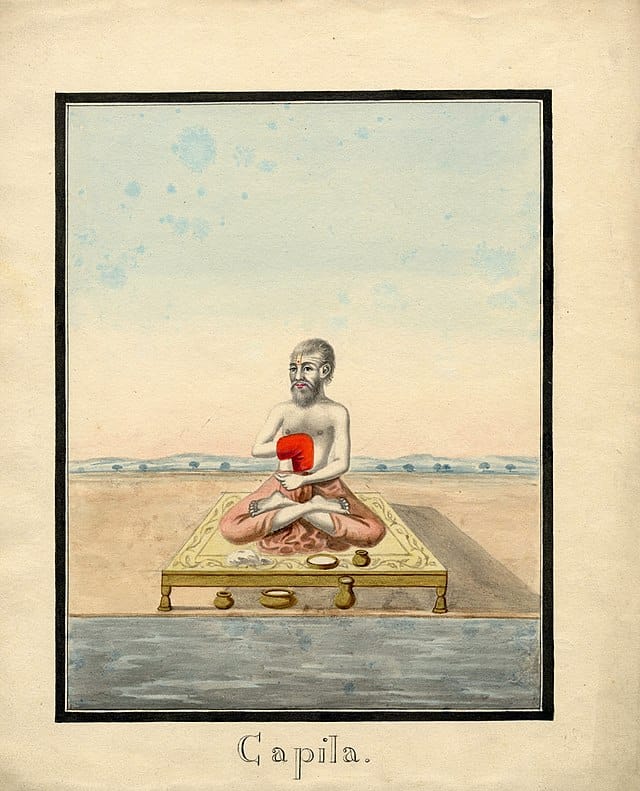
Kapila is a given name of different individuals in ancient and medieval Indian texts, of which the most well known is the founder of the Samkhya school of Hindu philosophy. Kapila of Samkhya fame is considered a Vedic sage, estimated to have lived in the 6th-century BCE, or the 7th-century BCE.Rishi Kapila is credited with authoring the influential Samkhya-sutra, in which aphoristic sutras present the dualistic philosophy of Samkhya. Kapila’s influence on Buddha and Buddhism have long been the subject of scholarly studies.Many historic personalities in Hinduism and Jainism, mythical figures, pilgrimage sites in Indian religion, as well as an ancient variety of cow went by the name Kapila.
Read More About Kapila / Source
Asanga
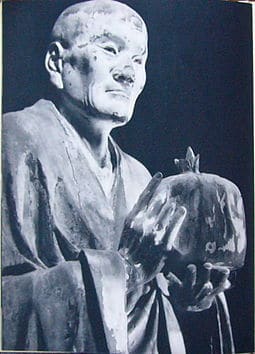
Asaṅga (fl. 4th century C.E.) was “one of the most important spiritual figures” of Mahayana Buddhism and the “founder of the Yogachara school”. Traditionally, he and his half-brother Vasubandhu are regarded as the major classical Indian Sanskrit exponents of Mahayana Abhidharma, Vijñanavada (awareness only) thought and Mahayana teachings on the bodhisattva path.
Read More About Asanga / Source
Atri
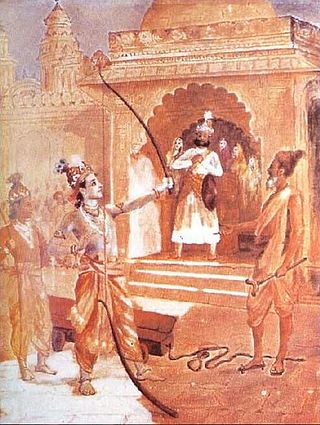
Atri or Attri is a Vedic sage, who is credited with composing numerous hymns to Agni, Indra and other Vedic deities of Hinduism. Atri is one of the Saptarishi (seven great Vedic sages) in the Hindu tradition, and the one most mentioned in its scripture Rigveda.The fifth Mandala (Book 5) of Rigveda is called the Atri Mandala in his honour, and the eighty seven hymns in it are attributed to him and his descendants.Atri is also mentioned in the Puranas and the Hindu Epics such as the Ramayana and the Mahabharata.
Jaimini

Jaimini was an ancient Indian scholar who founded the Mīmāṃsā school of Hindu philosophy. He was a disciple of sage Veda Vyasa, the son of Parashara. Traditionally attributed to be the author of the Mimamsa Sutras and Jaimini Sutras, he is estimated to have lived around the 4th-century BCE. His school is considered non-theistic, but one that emphasized rituals parts of the Vedas as essential to Dharma.Jaimini’s guru was Badarayana, the latter founded the Vedanta school of Hindu philosophy, emphasizing the knowledge parts of the Vedas, and credited with authoring Brahma Sutras. Both Badarayana and Jaimini quoted each other as they analyzed each other’s theories, Badarayana emphasizing knowledge while Jaimini emphasizes rituals, sometimes agreeing with each other, sometimes disagreeing, often anti-thesis of the other.Jaimini’s contributions to textual analysis and exegesis influenced other schools of Indian philosophies, and the most studied bhasya (reviews and commentaries) on Jaimini’s texts were by scholars named Shabara, Kumarila and Prabhakara.
Read More About Jaimini / Source
Ashtavakra
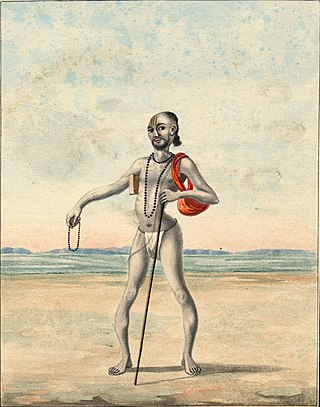
Ashtavakra is a revered Vedic sage in Hinduism. His name literally means “eight bends”, reflecting the eight physical handicaps he was born with. His maternal grandfather was the Vedic sage Aruni, his parents were both Vedic students at Aruni’s school. Ashtavakra studied, became a sage and a celebrated character of the Hindu History(Itihas) Epics and Puranas.Ashtavakra is the author of the text Aṣṭāvakra Gītā, also known as Aṣṭāvakra Saṃhitā, in Hindu traditions. The text is a treatise on Brahman and Atman.
Read More About Ashtavakra / Source
Nagarjuna
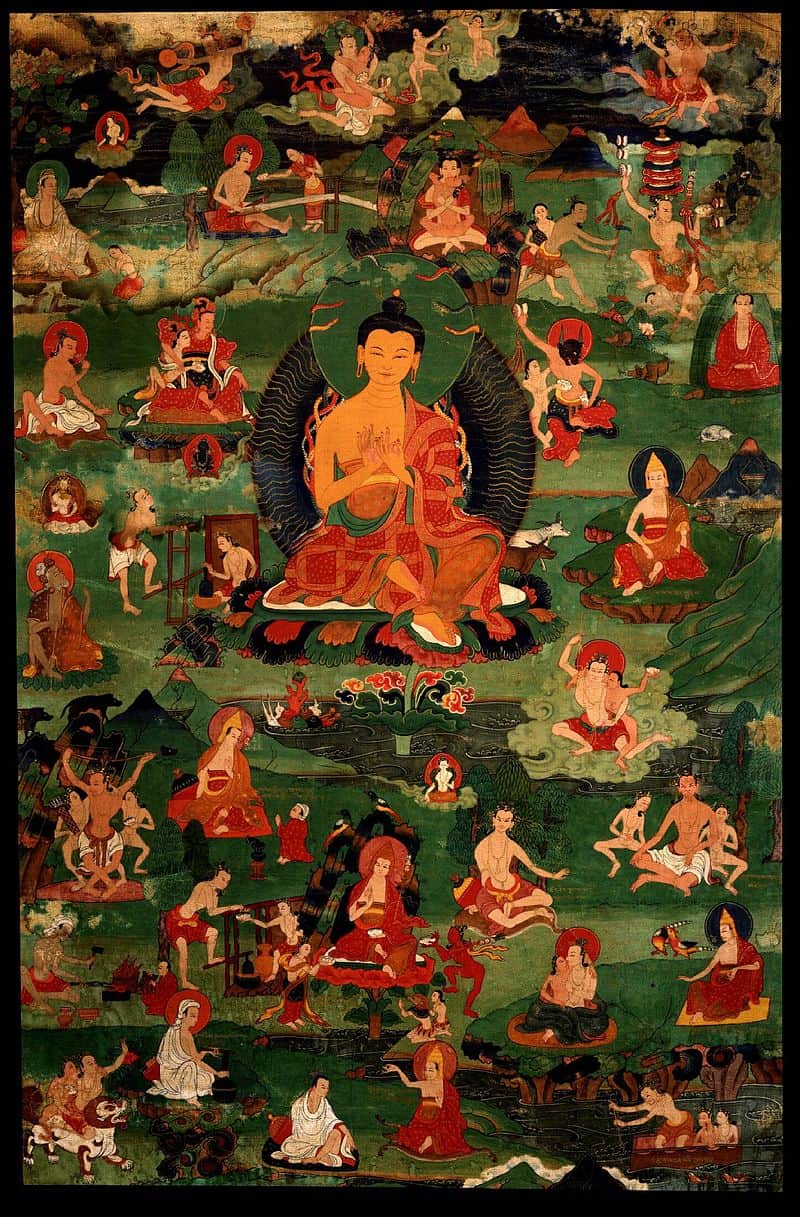
Nagarjuna (c. 150 – c. 250 CE), (Tibetan: mGon-po Klu-grub) is widely considered one of the most important Buddhist philosophers. Along with his disciple Āryadeva, he is considered the founder of the Madhyamaka school of Mahāyāna Buddhism. Nāgārjuna is also credited with developing the philosophy of the Prajñāpāramitā sūtras and, by some sources, with having revealed these scriptures to the world after recovering them from the nāgas. He is traditionally thought to have written many treatises on rasayana, as well as serving a term as the head of Nālandā.
Read More About Nagarjuna / Source
Badarayana
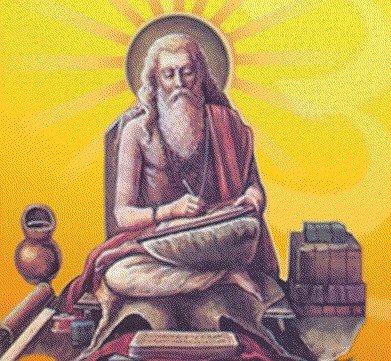
The originator of the justice-departure of Badarayana Vedanta was the author of the book Brahmasutra. As many Brahmasutras are available, their author was the same person and they were Badarayana. From the time of Vachaspatimishra, Badarayana was also known as ‘Vyasa’, but the Brahmasutrakara Badarayana was a different person from Ved Vyasa or ‘Krishna Dvaipayana’, the author of Mahabharata. The importance of Brahmasutra in Indian philosophy is many. First of all, his importance is that he gave a philosophy form to the Upanishads. He became the founder of Vedanta.A study of the Brahmasutras suggests that the Badarayana considered direct, conjecture, subhuman and word or sruti.
Read More About Badarayana / Source
Jiddu Krishnamurti
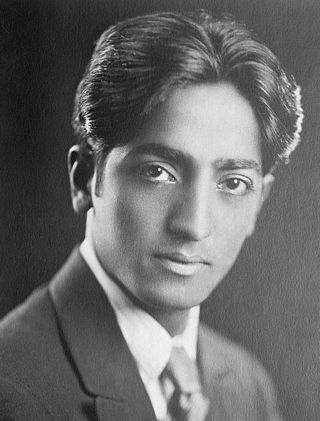
Jiddu Krishnamurti ( 11 May 1895 – 17 February 1986) was an Indian speaker and writer. In his early life, he was groomed to be the new World Teacher, but later rejected this mantle and withdrew from the Theosophy organization behind it. His interests included psychological revolution, the nature of mind, meditation, inquiry, human relationships, and bringing about radical change in society. He stressed the need for a revolution in the psyche of every human being and emphasised that such revolution cannot be brought about by any external entity, be it religious, political, or social.
Krishnamurti was born in south India in what is now the modern day Madanapalle of Andhra Pradesh. In early adolescence, he met occultist and theosophist Charles Webster Leadbeater on the grounds of the Theosophical Society headquarters at Adyar in Madras. He was subsequently raised under the tutelage of Annie Besant and Leadbeater, leaders of the Society at the time, who believed him to be a ‘vehicle’ for an expected World Teacher. As a young man, he disavowed this idea and dissolved the Order of the Star in the East, an organisation that had been established to support it.
Read More About Jiddu Krishnamurti / Source
Adi Shankaracharya
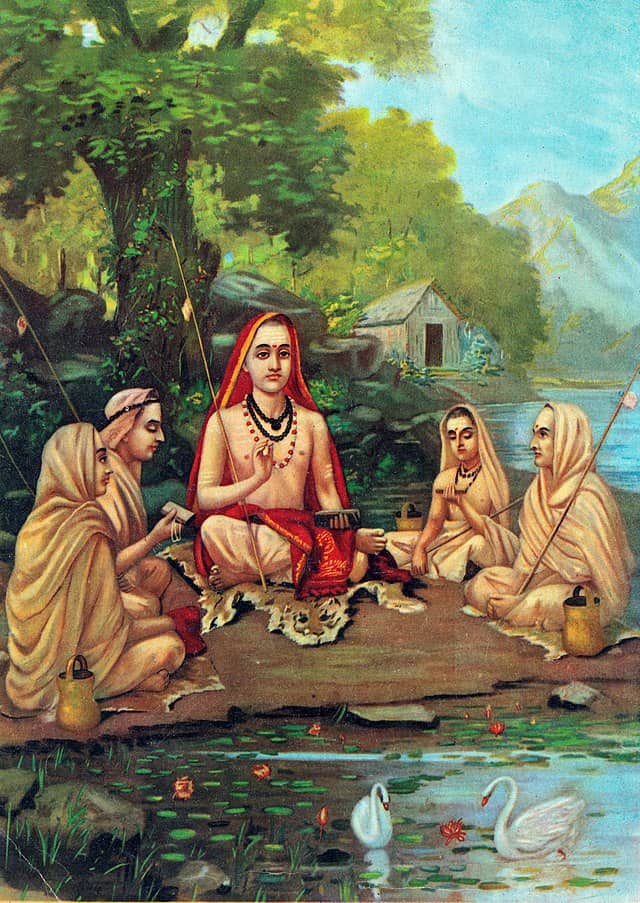
Adi Shankaracharya was an Indian philosopher and theologian who consolidated the doctrine of Advaita Vedanta. He is credited with unifying and establishing the main currents of thought in Hinduism. Adi Shankaracharya was an Indian philosopher and theologian who consolidated the doctrine of Advaita Vedanta. Although he is credited by some with unifying and establishing the main currents of thought in Hinduism, his influence on Hindu intellectual thought has been questioned; until Vācaspati Miśra (tenth century CE), his works may have been overshadowed by his older contemporary, Maṇḍana Miśra. The historical fame and cultural influence of Shankara may have grown centuries later after his death, particularly during the era of Muslim invasions and consequent devastation of India.
Read More About Adi Shankaracharya / Source
Saptarishi

The Saptarishi, a Sanskrit dvigu meaning “seven sages”) are the seven rishis in ancient India, who are extolled at many places in the Vedas and other Hindu literature. The Vedic Samhitas never enumerate these rishis by name, though later Vedic texts such as the Brahmanas and Upanisads do so. They are regarded in the Vedas as the patriarchs of the Vedic religion.
The earliest list of the Seven Rishis is given by Jaiminiya Brahmana 2.218–221: Agastya, Atri, Bhardwaja, Gautam, Jamadagni, Vashistha and Vishvamitra followed by Brihadaranyaka Upanisad 2.2.6 with a slightly different list: Atri, Bharadvaja, Gautama, Jamadagni, Kashyapa, Vashistha and Vishwamitra. The late Gopatha Brahmana 1.2.8 has Vashistha, Vishvamitra, Jamadagni, Gautama, Bharadvaja, Gungu, Agastya and Kashyapa.
In post-Vedic texts, different lists appear; some of these rishis were recognized as the ‘mind-born sons’ (Sanskrit: मनस पुत्र, manasputra) of Brahma, the representation of the Supreme Being as Creator. Other representations are Mahesh or Shiva as the Destroyer and Vishnu as the Preserver. Since these seven rishis were also among the primary eight rishis, who were considered to be the ancestors of the Gotras of Brahmins, the birth of these rishis was mythicized.
Read More About Saptarishi / Source
Ramanuja
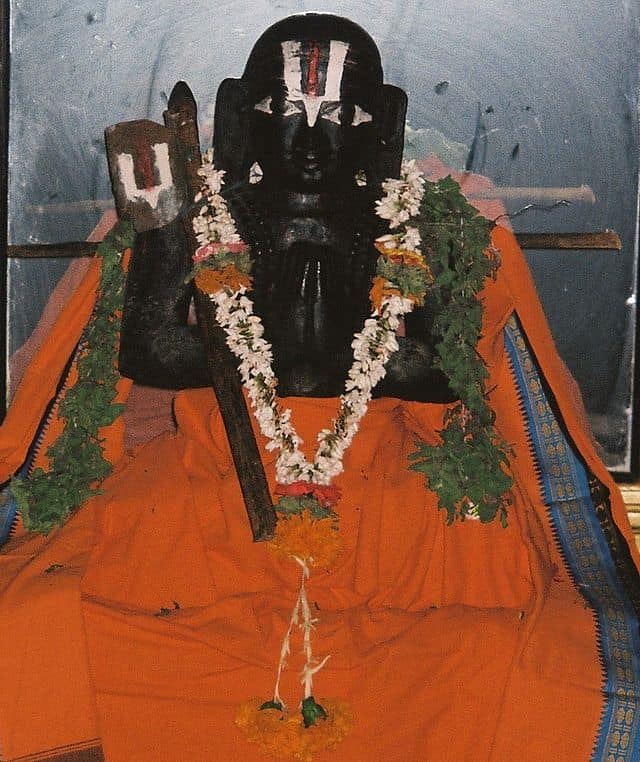
Ramanuja or Ramanujacharya (c. 1017–1137 CE ) was an Indian theologian, philosopher, social reformer, and one of the most important exponents of the Sri Vaishnavism tradition within Hinduism. His philosophical foundations for devotionalism were influential to the Bhakti movement.Ramanuja’s guru was Yādava Prakāśa, a scholar who was a part of the more ancient Advaita Vedānta monastic tradition. Sri Vaishnava tradition holds that Ramanuja disagreed with his guru and the non-dualistic Advaita Vedānta, and instead followed in the footsteps of Tamil Alvārs tradition, the scholars Nāthamuni and Yamunāchārya. Ramanuja is famous as the chief proponent of Vishishtadvaita subschool of Vedānta, and his disciples were likely authors of texts such as the Shatyayaniya Upanishad. Ramanuja himself wrote influential texts, such as bhāsya on the Brahma Sutras and the Bhagavad Gita, all in Sanskrit.His Vishishtadvaita (qualified non-dualism) philosophy has competed with the Dvaita (theistic dualism) philosophy of Madhvāchārya, and Advaita (non-dualism) philosophy of Ādi Shankara, together the three most influential Vedantic philosophies of the 2nd millennium. Ramanuja presented the epistemic and soteriological importance of bhakti, or the devotion to a personal God (Vishnu in Ramanuja’s case) as a means to spiritual liberation.
Read More About Ramanuja / Source
Pippalāda
Pippalada was an ancient Indian Vedic sage and philosopher in Hindu tradition. He is known to have written the Prashna Upanishad, which is among the ten Mukhya Upanishads. He was the son of noble benevolent sage Dadhichi, who donated his bones to the devatas to provide them a material for making weapons and defeat the Asurs. He was the founder of Pippalada School of thought, which taught the Atharvaveda.
Read More About Pippalāda / Source
Shriharsha
Shri-harsha (IAST: Śrīharṣa) was a 12th century Sanskrit poet and philosopher from India. Śrīharṣa was the son of Śrīhira and Mamalladevī. His father, Śrīhira, was a poet in the court of the Gahadavala king Vijayachandra. His father was also guiding and diverting common people towards god with veda’s, Bhagavad Gita’s thoughts. His father asked Harsha at the time of death to study well and become pandit. Then, use his shiksha (education) towards making life of people divine and better. Also, asked to take thoughts of Bhagavad Gita to every one. Harsha went to gurukul for education and study under Guru’s guidance. He mastered all scriptures and all schools of thoughts prevailing at that time. He wrote unparalleled book (granth), खण्डन-खण्ड-खाद्य, on advait vedant[3]. In this book, he has refuted Nyayadarshan’s principals.
Read More About Shriharsha / Source
Pāṇini
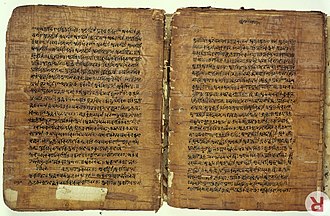
Pāṇini ( variously dated between fl. 4th century BCE and “6th to 5th century BCE”) was an ancient Sanskrit philologist, grammarian, and a revered scholar in ancient India.Since the discovery and publication of his work by European scholars in the nineteenth century, Pāṇini has been considered the “first descriptive linguist”, and even labelled as “the father of linguistics”. Pāṇini’s grammar was influential on such foundational linguists as Ferdinand de Saussure and Leonard Bloomfield.
Read More About Pāṇini / Source
Buddhaghosa
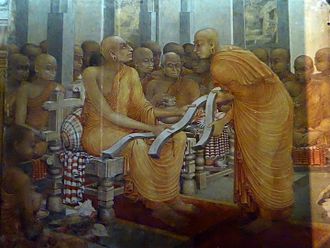
Buddhaghosa was a 5th-century Indian Theravada Buddhist commentator, translator and philosopher. He worked in the Great Monastery (Mahāvihāra) at Anurādhapura, Sri Lanka and saw himself as being part of the Vibhajjavāda school and in the lineage of the Sinhalese Mahāvihāra.His best-known work is the Visuddhimagga (“Path of Purification”), a comprehensive summary of older Sinhala commentaries on Theravada teachings and practices. According to Sarah Shaw, in Theravada this systematic work is “the principal text on the subject of meditation.” The interpretations provided by Buddhaghosa have generally constituted the orthodox understanding of Theravada scriptures since at least the 12th century CE.He is generally recognized by both Western scholars and Theravadins as the most important philosopher and commentator of the Theravada, but is also criticised for his departures from the canonical texts.
Read More About Buddhaghosa / Source
Ramana Maharshi

Ramana Maharshi (30 December 1879 – 14 April 1950) was an Indian Hindu sage and jivanmukta (liberated being). He was born Venkataraman Iyer, but is mostly known by the name Bhagavan Sri Ramana Maharshi.He was born in Tiruchuli, Tamil Nadu, India. In 1895, an attraction to the sacred hill Arunachala and the 63 Nayanmars was aroused in him, and in 1896, at the age of 16, he had a “death-experience” where he became aware of a “current” or “force” (avesam) which he recognized as his true “I” or “self”, and which he later identified with “the personal God, or Iswara”, that is, Shiva. This resulted in a state that he later described as “the state of mind of Iswara or the jnani”. Six weeks later he left his uncle’s home in Madurai, and journeyed to the holy mountain Arunachala, in Tiruvannamalai, where he took on the role of a sannyasin (though not formally initiated), and remained for the rest of his life.
He attracted devotees that regarded him as an avatar and came to him for darshan (“the sight of God”). In later years an ashram grew up around him, where visitors received upadesa (“spiritual instruction”) by sitting silently in his company asking questions. Since the 1930s his teachings have been popularized in the West, resulting in his worldwide recognition as an enlightened being.Ramana Maharshi approved a number of paths and practices, but recommended self-enquiry as the principal means to remove ignorance and abide in Self-awareness, together with bhakti (devotion) or surrender to the Self.
Read More About Ramana Maharshi / Source
Vātsyāyana

Vātsyāyana is an ancient Indian philosopher, known for writing the Kama Sutra, the most ancient book in the world on human sexuality. He lived in India during the second or third century CE, probably in Pataliputra (modern day Patna).He is not to be confused with Pakṣilasvāmin Vātsyāyana, the author of Nyāya Sutra Bhāshya, the first preserved commentary on Gotama’s Nyāya Sutras. His name is sometimes erroneously confused with Mallanaga, the seer of the Asuras, to whom the origin of erotic science is attributed.
Read More About Vātsyāyana / Source
Vasugupta
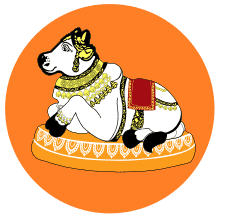
Vasugupta ( 800 – 850 CE) was the author of the Shiva Sutras, an important text of the Advaita tradition of Kashmir Shaivism, also called Trika (sometimes called Trika Yoga). Little is known about Vasugupta’s life, other than he lived in Kashmir and in the first half of the 9th century. He probably was born in late 8th century. This dating is based on mentions of his work in other Indian texts, and the biography of his students particularly Kallata and Somananda, both of whom are dated to have actively composed philosophical texts sometime between 825 and 900 CE. He probably was a contemporary and aware of the ideas of Advaita Vedanta, and of Buddhist scholars of the 8th and 9th century.
Read More About Vasugupta / Source
Umaswami (Umaswati)
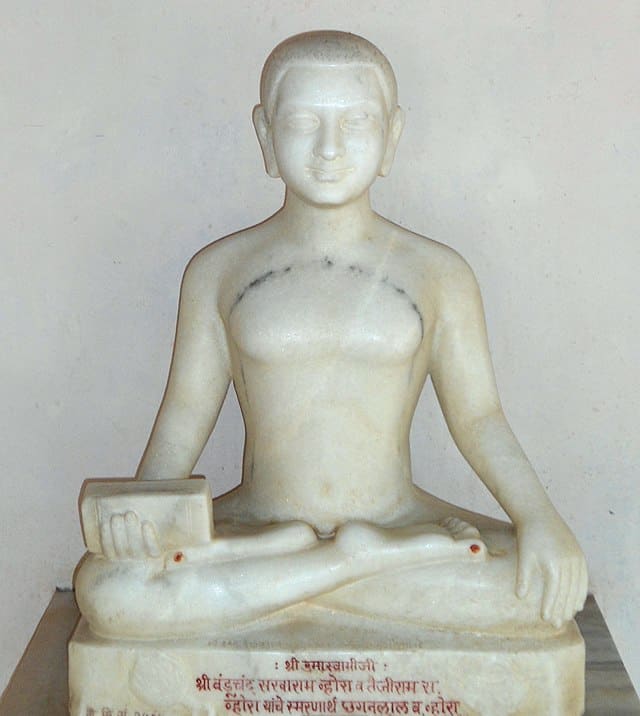
Umaswati, also spelled as Umasvati and known as Umaswami, was an Indian scholar, possibly between 2nd-century and 5th-century CE, known for his foundational writings on Jainism. He authored the Jain text Tattvartha Sutra (literally ‘”All That Is”, also called Tattvarthadhigama Sutra). Umaswati’s work was the first Sanskrit language text on Jain philosophy, and is the earliest extant comprehensive Jain philosophy text accepted as authoritative by all four Jain traditions. His text has the same importance in Jainism as Vedanta Sutras and Yogasutras have in Hinduism.Umaswati is claimed by both the Digambara and Śvētāmbara sects of Jainism as their own. On the basis of his genealogy, he was also called Nagaravachka. Umaswati was influential not only in Jainism, but also other Indian traditions over the centuries. The 13th- to 14th-century Madhvacharya, founder of Dvaita Vedanta school of Hindu philosophy, for example referred to Umaswati in his works as Umasvati-Vachakacharya. Some in the Digambara Jain tradition believe him to be the chief disciple of Acharya Kundakunda.
Read More About Umaswami (Umaswati) / Source
Chandrakirti
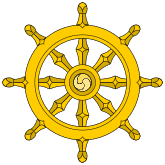
Candrakīrti ( c. 600 – c. 650) was a Buddhist scholar of the Madhyamaka school and a noted commentator on the works of Nagarjuna (c. 150 – c. 250 CE) and those of his main disciple, Aryadeva, authoring two influential works, Prasannapadā and Madhyamakāvatāra.Very little is known about Chandrakirti’s life. Tibetan sources state that he was born in Samanta, South India. and was a student of Kamalabuddhi. He is traditionally associated with Nalanda Mahavihara where he may have been a monk.
Read More About Chandrakirti / Source
Charvaka
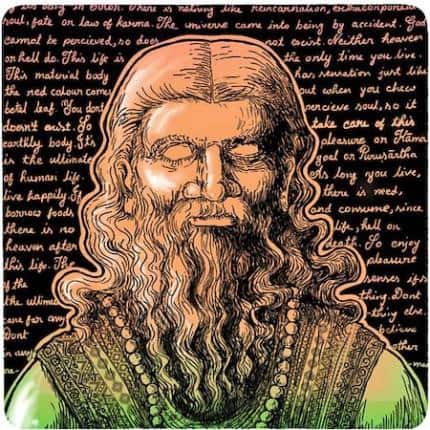
Charvaka ( also known as Lokāyata, is an ancient school of Indian materialism. Charvaka holds direct perception, empiricism, and conditional inference as proper sources of knowledge, embraces philosophical skepticism and rejects ritualism, religion and supernaturalism. It was a very popular belief system in India before the emergence of Jain and Buddhist tradition.Brihaspati is traditionally referred to as the founder of Charvaka or Lokāyata philosophy, although some scholars dispute this. During the Hindu reformation period in the 600 BCE, when Buddhism and Jainism arose, the philosophy was well documented and opposed by the new religions. Much of the primary literature of Charvaka, the Barhaspatya sutras, were lost either due to waning popularity or other unknown reasons. Its teachings have been compiled from historic secondary literature such as those found in the shastras, sutras, and the Indian epic poetry as well as in the dialogues of Gautama Buddha and from Jain literature. However, there is text that may belong to the Charvaka tradition, written by the skeptic philosopher Jayarāśi Bhaṭṭa, known as the Tattvôpaplava-siṁha, that provides information about this school, albeit unorthodox.One of the widely studied principles of Charvaka philosophy was its rejection of inference as a means to establish valid, universal knowledge, and metaphysical truths. In other words, the Charvaka epistemology states that whenever one infers a truth from a set of observations or truths, one must acknowledge doubt; inferred knowledge is conditional.Charvaka is categorized as a heterodox school of Indian philosophy. It is considered an example of atheistic schools in the Hindu tradition.
Read More About Charvaka / Source
Sri Aurobindo
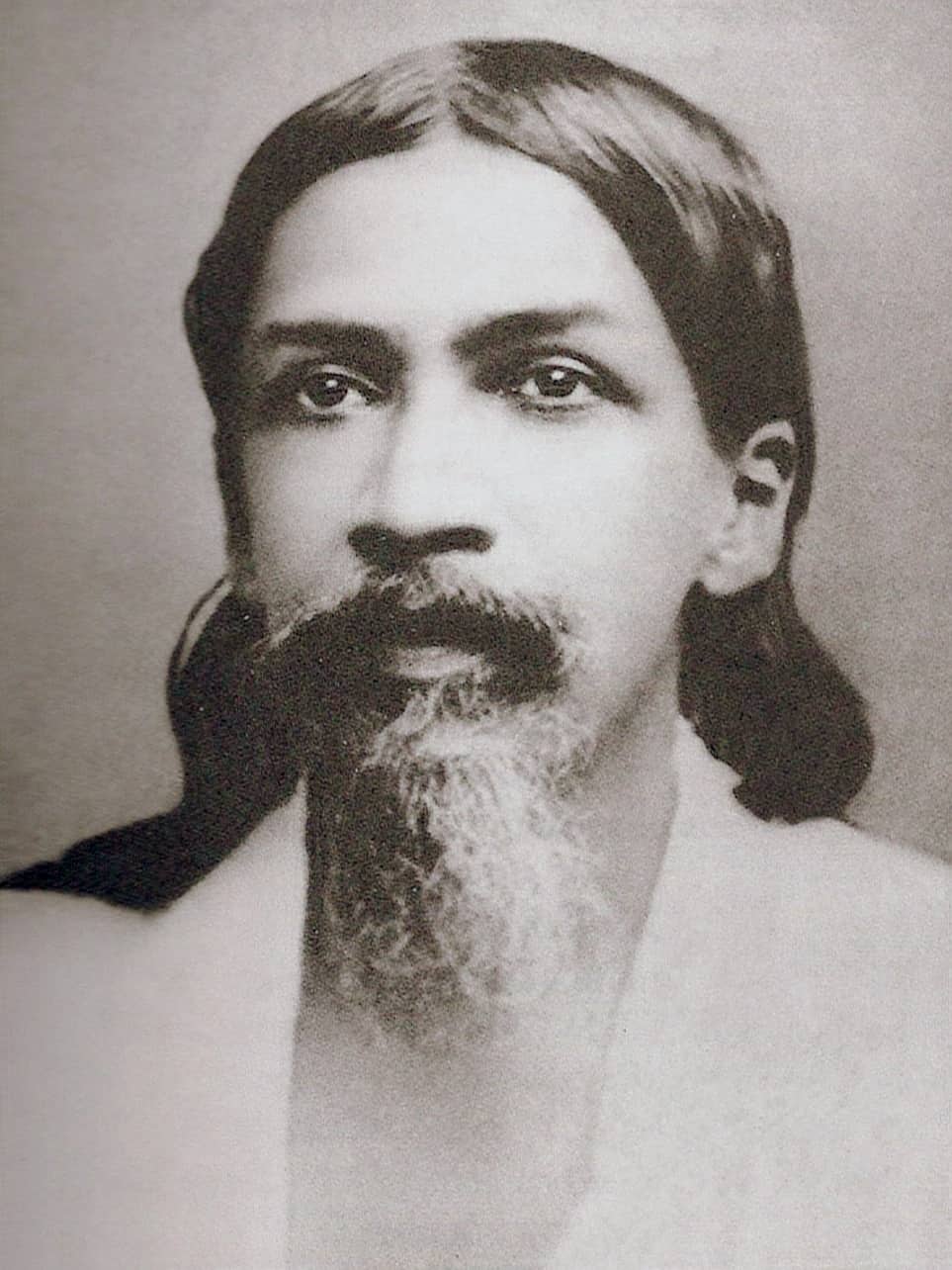
Sri Aurobindo (15 August 1872 – 5 December 1950) was an Indian philosopher, yogi, guru, poet, and nationalist. He joined the Indian movement for independence from British rule, for a while was one of its influential leaders and then became a spiritual reformer, introducing his visions on human progress and spiritual evolution.
Aurobindo studied for the Indian Civil Service at King’s College, Cambridge, England. After returning to India he took up various civil service works under the Maharaja of the Princely state of Baroda and became increasingly involved in nationalist politics in the Indian National Congress and the nascent revolutionary movement in Bengal with the Anushilan Samiti. He was arrested in the aftermath of a number of bomb outrages linked to his organization in a public trial where he faced charges of treason for Alipore Conspiracy. However Aurobindo could only be convicted and imprisoned for writing articles against British rule in India. He was released when no evidence could be provided, following the murder of a prosecution witness, Narendranath Goswami, during the trial. During his stay in the jail, he had mystical and spiritual experiences, after which he moved to Pondicherry, leaving politics for spiritual work.
At Pondicherry, Sri Aurobindo developed a spiritual practice he called Integral Yoga. The central theme of his vision was the evolution of human life into a divine life. He believed in a spiritual realisation that not only liberated but transformed human nature, enabling a divine life on earth. In 1926, with the help of his spiritual collaborator, Mirra Alfassa (referred to as “The Mother”), he founded the Sri Aurobindo Ashram.
His main literary works are The Life Divine, which deals with theoretical aspects of Integral Yoga; Synthesis of Yoga, which deals with practical guidance about Integral Yoga; and Savitri: A Legend and a Symbol, an epic poem.
Read More About Sri Aurobindo / Source
Akshpad Gautam
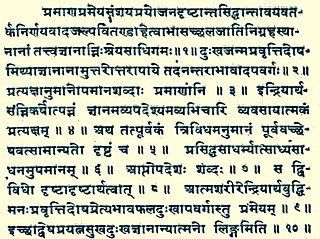
Akshapada is the author of Nyayasutra, the teacher, also known as Maharishi Gautama or Gautama. According to Mahakavi Bhasa the name of the creator of jurisprudence is Medhatithi (Statue drama, fifth issue). According to the Mahabharata (Shanti Parva, A. 265), Gautama Medhatithi is the same person, not two different people (Medhatithirmahapragyano Gautamastapasi situated:).
Read More About Akshpad Gautam / Source
Parshvanatha
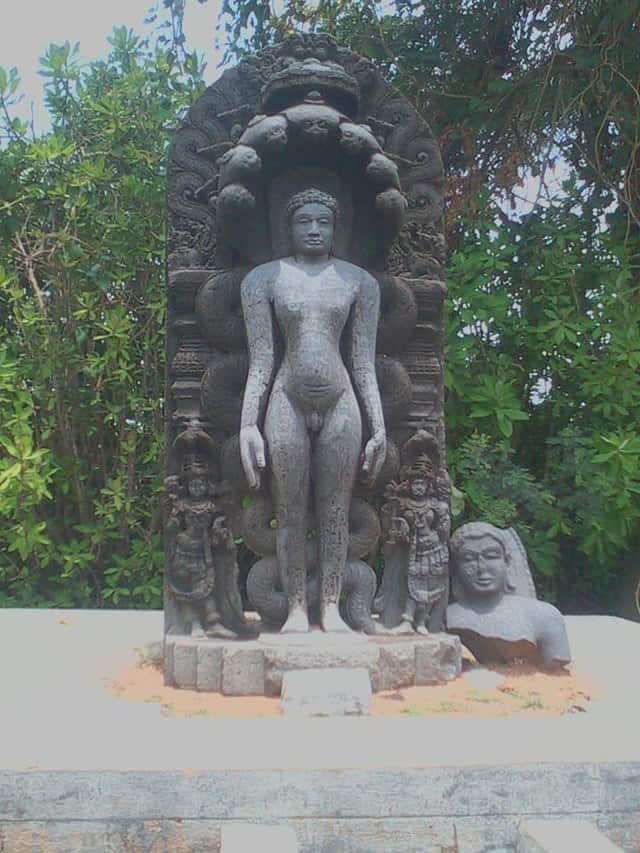
Parshvanatha (Pārśvanātha), also known as Parshva (Pārśva) and Paras, was the 23rd of 24 tirthankaras (ford-makers or propagators of dharma) of Jainism. He is one of the earliest tirthankaras who are acknowledged as historical figures. He was the earliest exponent of Karma philosophy in recorded history. The Jain sources place him between the 9th and 8th centuries BC whereas historians point out that he lived in the 8th or 7th century BC. Parshvanatha was born 273 years before Mahavira. He was the spiritual successor of 22nd tirthankara Neminath. He is popularly seen as a propagator and reviver of Jainism. Parshvanatha attained moksha on Mount Sammeta (Madhuban, Jharkhand) in the Ganges basin, an important Jain pilgrimage site. His iconography is notable for the serpent hood over his head, and his worship often includes Dharanendra and Padmavati (Jainism’s serpent god and goddess).
According to Jain texts, Parshvanatha was born in Banaras (Varanasi), India. Renouncing worldly life, he founded an ascetic community. Texts of the two major Jain sects (Digambaras and Śvētāmbaras) differ on the teachings of Parshvanatha and Mahavira, and this is a foundation of the dispute between the two sects.
Read More About Parshvanatha / Source
Jamadagni
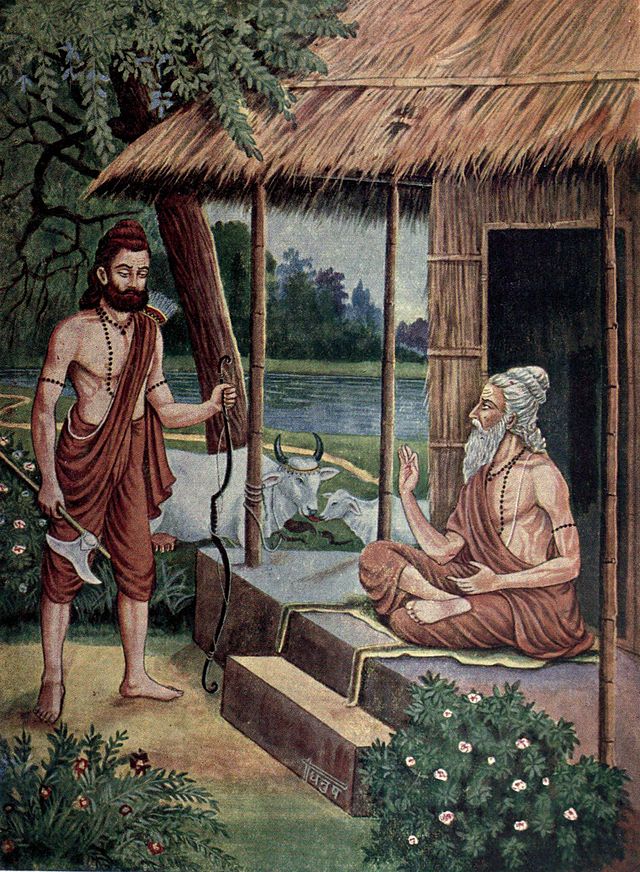
According to Hindu legends, Jamadagni is one of the Saptarishis (Seven Great Sages Rishi) in the seventh, current Manvantara. He is the father of Parashurama, the sixth incarnation of Vishnu. He was a descendant of the sage Bhrigu, one of the Prajapatis created by Brahma, the God of Creation. Jamadagni had five children with wife Renuka, the youngest of whom was Parashurama, an avatar of Lord Vishnu. Jamadagni was well versed in the scriptures and weaponry without formal instruction.
Read More About Jamadagni / Source
Ajatashatru
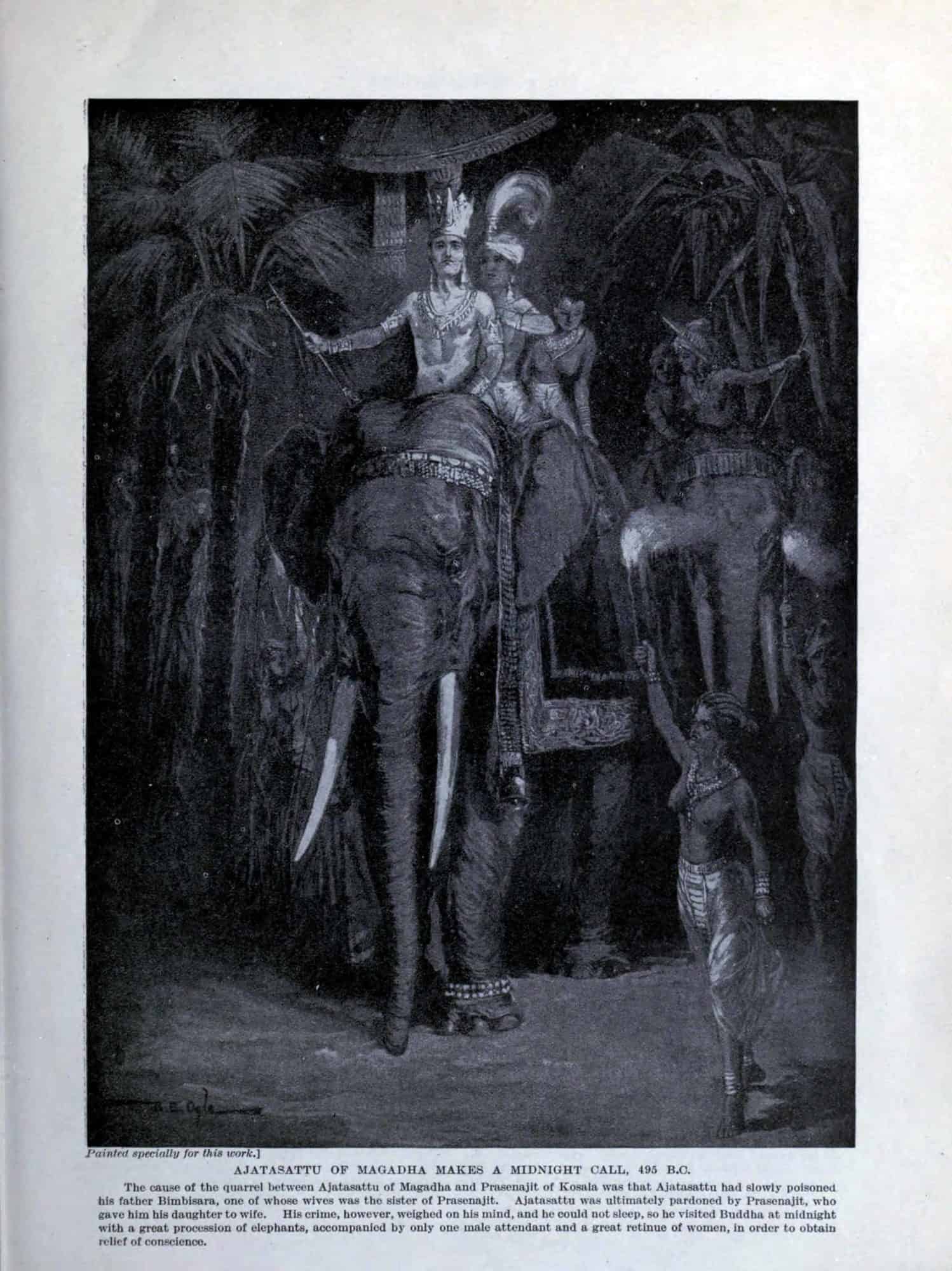
Ajatashatru (492 to 460 BCE or early 5th century BCE) was a king of the Haryanka dynasty of Magadha in East India. He was the son of King Bimbisara and was a contemporary of both Mahavira (Nigantha Nataputta) and Gautama Buddha. He forcefully took over the kingdom of Magadha from his father and imprisoned him. He fought a war against Vajji, ruled by the Lichchhavis, and conquered the republic of Vesali.
Ajatashatru followed policies of conquest and expansion. He defeated his neighbours including the king of Kosala; his brothers, when at odds with him, went to Kashi, which had been given to Bimbisara as dowry. This led to a war between Magadha and Kosala. Ajatashatru occupied Kashi and captured the smaller kingdoms. Magadha under Ajatashatru became the most powerful kingdom in North India.
He is the inventor of two weapons used in war called rathamusala (Scythed chariot) and mahashilakantaka (engine for ejecting big stones).
Read More About Ajatashatru / Source
Udayana
Udayana, also known as Udayanācārya (Udyanacharya, or Master Udayana), was a very important Hindu logician of the tenth century who attempted to reconcile the views held by the two major schools of logic (Nyaya and Vaisheshika). This became the root of the Navya-Nyāya (“New Nyāya”) school of the thirteenth century, established by the Gangesha Upadhyaya school of “right” reasoning, which is still recognized and followed in some regions of India today. He lived in Kariyan village in Mithila, near present-day Darbhanga, Bihar state, India.
Udayana wrote a sub-gloss on Vachaspati’s work called the Nyaya-vaartika-taatparya-tiikaa-parishuddhi. He wrote several other works such as the Kusumanjali, Atma-tattva-viveka, Kiranaavali and Nyaya-parishishhta (also called Bodha siddhi or Bodha shuddhi).
He is given credit by Naiyâyikas for having demolished in a final fashion the claims of the Buddhist logicians. All his known works are thought to have been preserved, attesting to the importance given to him in Indian philosophy.
Read More About Udayana / Source
Gorakhnath
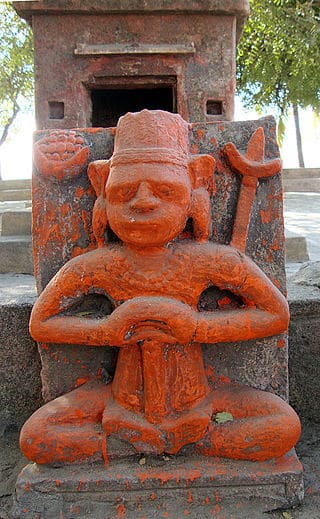
Gorakhnath (also known as Goraksanath, c. early 11th century) was a Hindu yogi, saint who was the influential founder of the Nath Hindu monastic movement in India. He is considered as one of the two notable disciples of Matsyendranath. His followers are found in India at the place known as Garbhagiri which is in Ahmednagar in the state of Maharashtra. These followers are called yogis, Gorakhnathi, Darshani or Kanphata.He was one of nine saints also known as Navnath and is widely popular in Maharashtra, India. Hagiographies describe him as more than a human teacher and someone outside the laws of time who appeared on earth in different ages. Historians state Gorakhnath lived sometime during the first half of the 2nd millennium CE, but they disagree in which century. Estimates based on archaeology and text range from Briggs’ 15th- to 12th-century to Grierson’s estimate of the 14th-century.Gorakhnath is considered a Maha-yogi (or great yogi) in the Hindu tradition. He did not emphasise a specific metaphysical theory or a particular Truth, but emphasised that the search for Truth and the spiritual life is a valuable and normal goal of man. Gorakhnath championed Yoga, spiritual discipline and an ethical life of self-determination as a means to reaching samadhi and one’s own spiritual truths.Gorakhnath, his ideas and yogis have been highly popular in rural India, with monasteries and temples dedicated to him found in many states of India, particularly in the eponymous city of Gorakhpur.
Read More About Gorakhnath / Source
Sarvepalli Radhakrishnan
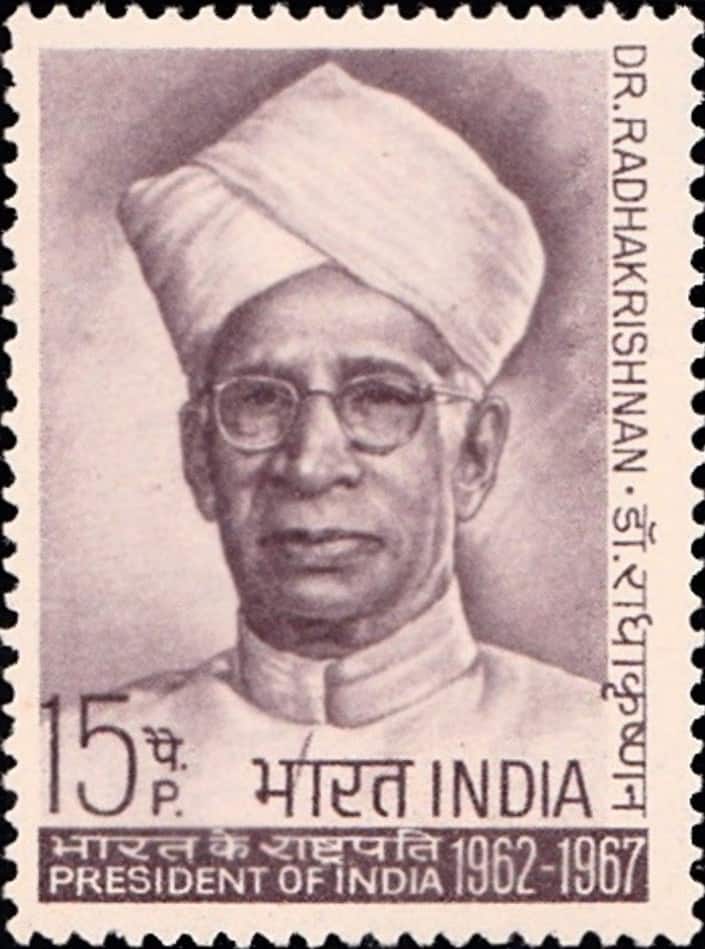
Sarvepalli Radhakrishnan pronunciation (5 September 1888 – 17 April 1975) was an Indian philosopher, academic, and statesman who served as the first Vice President of India (1952–1962) and the second President of India (1962–1967).One of India’s most distinguished twentieth-century scholars of comparative religion and philosophy, after completing his education at Madras Christian College in 1911, he became Assistant Professor and later Professor of Philosophy at Madras Presidency College then subsequently Professor of Philosophy at the University of Mysore (1918-1921); the King George V Chair of Mental and Moral Science at the University of Calcutta (1921–1932) and Spalding Professor of Eastern Religion and Ethics at University of Oxford (1936–1952) by which he became the first Indian to hold a professorial chair at the University of Oxford. He was Upton Lecturer at Manchester College, Oxford in 1926, 1929, and 1930. In 1930 he was appointed Haskell lecturer in Comparative Religion at the University of Chicago.His philosophy was grounded in Advaita Vedanta, reinterpreting this tradition for a contemporary understanding. He defended Hinduism against what he called “uninformed Western criticism”, contributing to the formation of contemporary Hindu identity. He has been influential in shaping the understanding of Hinduism, in both India and the west, and earned a reputation as a bridge-builder between India and the West.Radhakrishnan was awarded several high awards during his life, including a knighthood in 1931, the Bharat Ratna, the highest civilian award in India, in 1954, and honorary membership of the British Royal Order of Merit in 1963. He was also one of the founders of Helpage India, a non profit organisation for elderly underprivileged in India. Radhakrishnan believed that “teachers should be the best minds in the country”. Since 1962, his birthday has been celebrated in India as Teachers’ Day on 5 September every year.He is the only President of India who could not attend the Delhi Republic Day parade due to his ill health.
Read More About Sarvepalli Radhakrishnan / Source
Thiruvalluvar
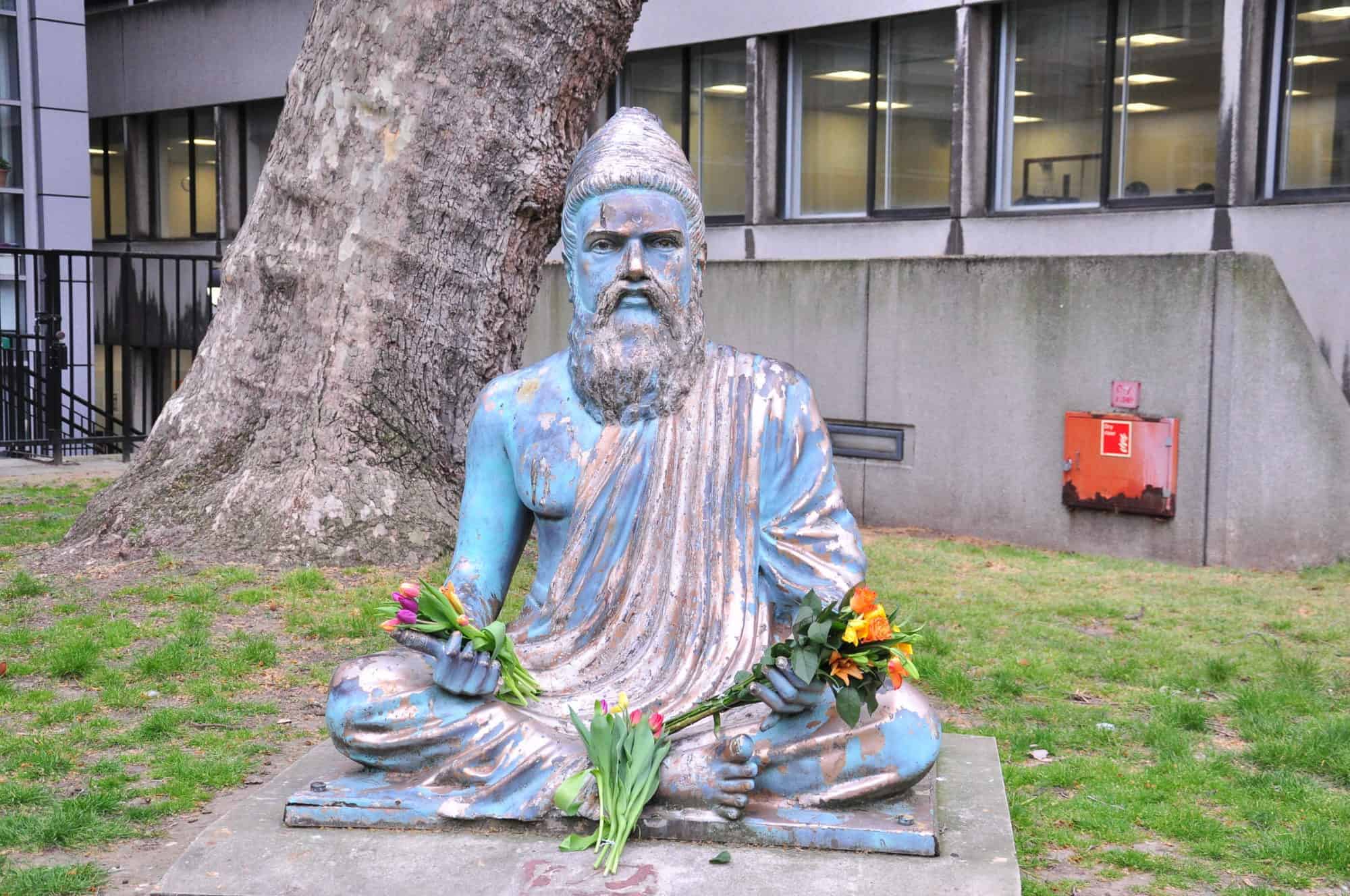
Thiruvalluvar, commonly known as Valluvar, was a celebrated Tamil poet and philosopher. He is best known as the author of Tirukkuṟaḷ, a collection of couplets on ethics, political and economical matters, and love. The text is considered an exceptional and widely cherished work of the Tamil literature.Almost no authentic information is available about Valluvar, states Kamil Zvelebil – a scholar of Tamil literature. His life and likely background are variously inferred from his literary works by different biographers. There are unauthentic hagiographic and legendary accounts of Valluvar’s life, and all major Indian religions, as well as Christian missionaries of the 19th century, have tried to claim him as secretly inspired (crypto-) or originally belonging to their tradition. Little is known with certainty about his family background, religious affiliation, or birthplace.
Read More About Thiruvalluvar / Source
Dharmakirti
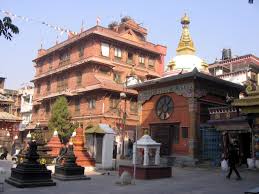
Dharmakīrti (fl. c. 6th or 7th century), was an influential Indian Buddhist philosopher who worked at Nālandā. He was one of the key scholars of epistemology (pramāṇa) in Buddhist philosophy, and is associated with the Yogācāra and Sautrāntika schools. He was also one of the primary theorists of Buddhist atomism. His works influenced the scholars of Mīmāṃsā, Nyaya and Shaivism schools of Hindu philosophy as well as scholars of Jainism.Dharmakīrti’s Pramāṇavārttika, his largest and most important work, was very influential in India and Tibet as a central text on pramana (‘valid knowledge instruments’) and was widely commented on by various Indian and Tibetan scholars. His texts remain part of studies in the monasteries of Tibetan Buddhism.
Read More About Dharmakirti / Source
Madhvacharya
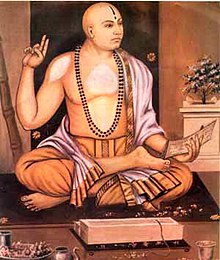
Madhvacharya ( CE 1238–1317), sometimes anglicised as Madhva Acharya, and also known as Pūrna Prajña and Ānanda Tīrtha, was an Indian philosopher, theologian and the chief proponent of the Dvaita (dualism) school of Vedanta. Madhva called his philosophy Tattvavāda meaning “arguments from a realist viewpoint”.Madhvacharya was born on the west coast of Karnataka state in 13th-century India. As a teenager, he became a Sanyasi (monk) joining Brahma-sampradaya guru Achyutapreksha, of the Ekadandi order. Madhva studied the classics of Hindu philosophy, particularly the Principal Upanishads, the Bhagavad Gita and the Brahma Sutras (Prasthanatrayi). He commented on these, and is credited with thirty seven works in Sanskrit. His writing style was of extreme brevity and condensed expression. His greatest work is considered to be the Anuvyakhyana, a philosophical supplement to his bhasya on the Brahma Sutras composed with a poetic structure. In some of his works, he proclaimed himself to be an avatar of Vayu, the son of god Vishnu.He was a critic of Adi Shankara’s Advaita Vedanta and Ramanuja’s Vishishtadvaita Vedanta teachings.
Read More About Madhvacharya / Source
Vishvamitra
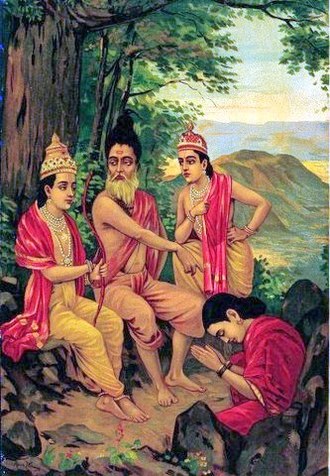
Brahmarshi Vishvamitra is one of the most venerated rishis or sages of ancient India. A near-divine being, he is also credited as the author of most of Mandala 3 of the Rigveda, including Gayatri Mantra. The Puranas mention that only 24 rishis since antiquity have understood the whole meaning of—and thus wielded the whole power of—Gayatri Mantra. Vishvamitra is supposed to be the first, and Yajnavalkya the last.
Read More About Vishvamitra / Source
Yagyavlkya
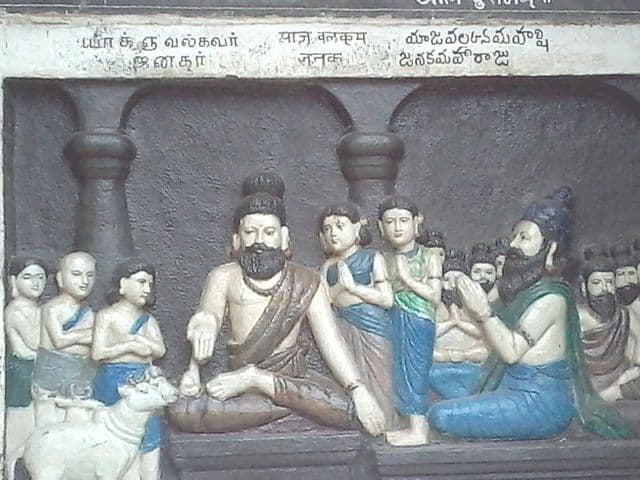
Yajnavalkya or Yagyavlkya was a Hindu Vedic sage. He is mentioned in the Upanishads, and likely lived in the Videha region of ancient India, approximately between the 8th century BCE, and the 7th century BCE. Yajnavalkya is considered one of the earliest philosophers in recorded history. Yajnavalkya proposes and debates metaphysical questions about the nature of existence, consciousness and impermanence, and expounds the epistemic doctrine of neti neti (“not this, not this”) to discover the universal Self and Ātman. His ideas for renunciation of worldly attachments have been important to Hindu sannyasa traditions.Yajnavalkya is credited for coining the Advaita (non-dualism, monism), another important tradition within Hinduism. Texts attributed to him, include the Yajnavalkya Smriti, Yoga Yajnavalkya and some texts of the Vedanta school. He is also mentioned in various Brahmanas and Aranyakas.He welcomed participation of women in Vedic studies, and Hindu texts contain his dialogues with two women philosophers, Gargi Vachaknavi and Maitreyi.
Read More About Yagyavlkya / Source
Kanada
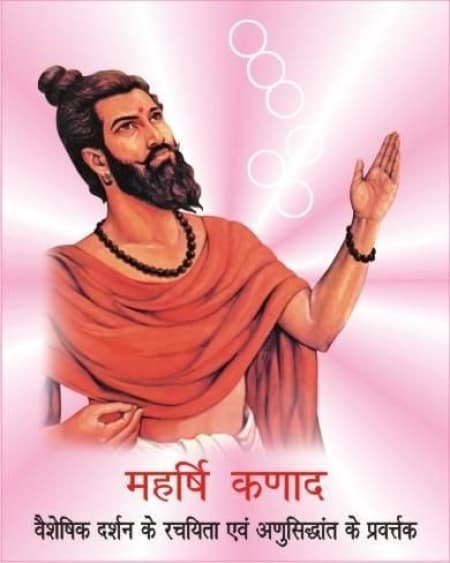
Kanada (Sanskrit: कणाद, IAST: Kaṇāda), also known as Kashyapa, Ulūka, Kananda and Kanabhuk, was an ancient Indian natural scientist and philosopher who founded the Vaisheshika school of Indian philosophy that also represents the earliest Indian physics. Estimated to have lived sometime between 6th century to 2nd century BCE, little is known about his life. His traditional name “Kanada” means “atom eater”, and he is known for developing the foundations of an atomistic approach to physics and philosophy in the Sanskrit text Vaiśeṣika Sūtra. His text is also known as Kanada Sutras, or Aphorisms of Kanada.The school founded by Kanada explains the creation and existence of the universe by proposing an atomistic theory, applying logic and realism, and is one of the earliest known systematic realist ontology in human history. Kanada suggested that everything can be subdivided, but this subdivision cannot go on forever, and there must be smallest entities (parmanu) that cannot be divided, that are eternal, that aggregate in different ways to yield complex substances and bodies with unique identity, a process that involves heat, and this is the basis for all material existence. He used these ideas with the concept of Atman (soul, Self) to develop a non-theistic means to moksha. If viewed from the prism of physics, his ideas imply a clear role for the observer as independent of the system being studied.
Kanada’s ideas were influential on other schools of Hinduism, and over its history became closely associated with the Nyaya school of Hindu philosophy.Kanada’s system speaks of six properties (padārthas) that are nameable and knowable. He claims that these are sufficient to describe everything in the universe, including observers. These six categories are dravya (substance), guna (quality), karman (motion), samanya (universal), visesa (particular), and samavaya (inherence). There are nine classes of substances (dravya), some of which are atomic, some non-atomic, and others that are all-pervasive.
The ideas of Kanada span a wide range of fields, and they influenced not only philosophy, but possibly scholars in other fields such as Charaka who wrote a medical text that has survived as Charaka Samhita.
Read More About Kanada / Source
Eknath Easwaran
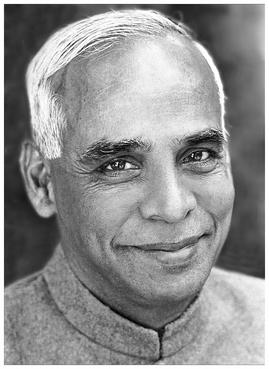
Eknath Easwaran (December 17, 1910 – October 26, 1999) was an Indian-born spiritual teacher, author, as well as a translator and interpreter of Indian religious texts such as the Bhagavad Gita and the Upanishads.
Easwaran was a professor of English literature at the University of Nagpur in India, and in 1959 he came to the United States as a Fulbright Scholar at the University of California, Berkeley where he taught courses on meditation. In 1961, Easwaran founded the Blue Mountain Center of Meditation and Nilgiri Press, based in northern California. Nilgiri Press has published over thirty books that he authored. Easwaran was influenced by Mahatma Gandhi, whom he met when he was a young man. Easwaran developed a method of meditation – silent repetition in the mind of memorized inspirational passages from the world’s major religious and spiritual traditions – which later came to be known as Passage Meditation.
Read More About Eknath Easwaran / Source
Bharadwaja
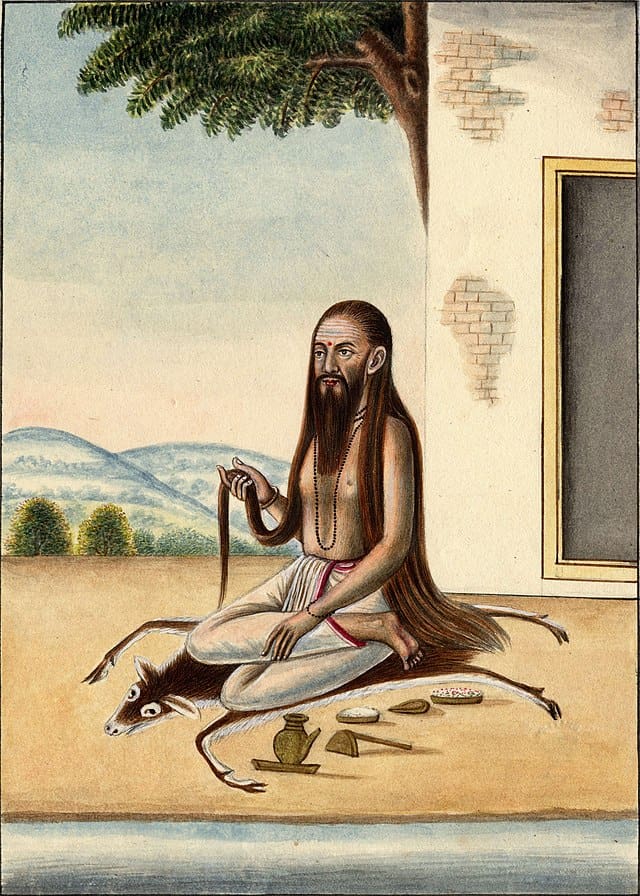
Bharadwaja, also referred to as Guru or Bharadvaja, Bṛhaspatya, was one of the revered Vedic sages (maharishi) in Ancient India. He was a renowned scholar, economist, and physician. His contributions to ancient Indian literature, specifically the Puranas and Rig Veda, provide significant insight into ancient Indian society. He and his family of students are considered the authors of the sixth book of the Rigveda. Bharadwaja was the father of the warrior Droṇācārya, a main character in the Mahabharata and instructor to Pandava and Kaurava princes. He was the grandfather of Aśvatthāma, a legendary warrior in Mahabharata. Both Droncharya and Ashwatthama fought in different battles of Mahabharata alongside the Kauravas. Bharadwaja is also mentioned in Charaka Samhita, an authoritative ancient Indian medical text.
Read More About Bharadwaja / Source
Paramahansa Yogananda
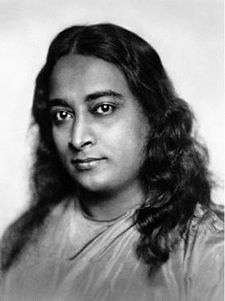
Paramahansa Yogananda ( January 5, 1893 – March 7, 1952) was an Indian monk, yogi and guru who introduced millions to the teachings of meditation and Kriya Yoga through his organization Self-Realization Fellowship (SRF) / Yogoda Satsanga Society (YSS) of India, and who lived his last 32 years in America. A chief disciple of the Bengali yoga guru Swami Sri Yukteswar Giri, he was sent by his lineage to spread the teachings of yoga to the West, to prove the unity between Eastern and Western religions and to preach a balance between Western material growth and Indian spirituality. His long-standing influence in the American yoga movement, and especially the yoga culture of Los Angeles, led him to be considered by yoga experts as the “Father of Yoga in the West.”Yogananda was the first major Indian teacher to settle in America, and the first prominent Indian to be hosted in the White House (by President Calvin Coolidge in 1927); his early acclaim led to him being dubbed “the 20th century’s first superstar guru,” by the Los Angeles Times.
Read More About Paramahansa Yogananda / Source
Muhammad Iqbal
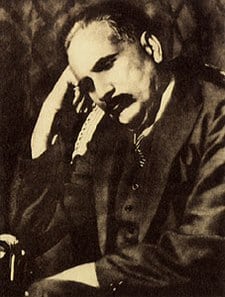
Sir Muhammad Iqbal ( 9 November 1877 – 21 April 1938) was a poet, Scholar and politician from Punjab, British India (now in Pakistan), whose poetry in Urdu and Persian is considered to be among the greatest of the modern era, and whose vision of an independent state for the Muslims of British India was to inspire the creation of Pakistan. He is commonly referred to as Allama Iqbal (علامہ اقبال, Allama lit. Scholar).
After studying in England and Germany, Iqbal established a law practice, but concentrated primarily on writing scholarly works on politics, economics, history, philosophy and religion. He is best known for his poetic works, including Asrar-e-Khudi—which brought a knighthood— Rumuz-e-Bekhudi, and the Bang-e-Dara. In Iran, where he is known as Iqbāl-e Lāhorī, he is highly regarded for his Persian works.
Iqbal was a strong proponent of the political and spiritual revival of Islamic civilisation across the world, but specifically in India; a series of famous lectures he delivered to this effect were published as The Reconstruction of Religious Thought in Islam.
Read More About Muhammad Iqbal / Source
Vasubandhu
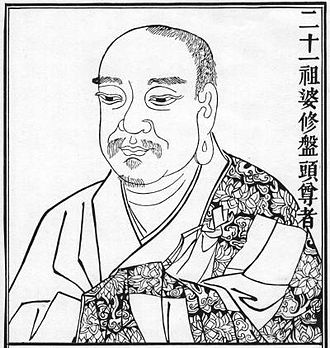
Vasubandhu (fl. 4th to 5th century CE) was an influential Buddhist monk and scholar from Gandhara. He was a philosopher who wrote commentary on the Abhidharma, from the perspectives of the Sarvastivada and Sautrāntika schools. After his conversion to Mahayana Buddhism, along with his half-brother, Asanga, he was also one of the main founders of the Yogacara school.
Vasubandhu’s Abhidharmakośakārikā (“Commentary on the Treasury of the Abhidharma”) is widely used in Tibetan and East Asian Buddhism, as the major source for non-Mahayana Abhidharma philosophy. His philosophical verse works set forth the standard for the Indian Yogacara metaphysics of “appearance only” (vijñapti-mātra), which has been described as a form of “epistemological idealism”, phenomenology and close to Immanuel Kant’s transcendental idealism. Apart from this, he wrote several commentaries, works on logic, argumentation and devotional poetry. Vasubandhu is one of the most influential thinkers in the Indian Buddhist philosophical tradition. In Jōdo Shinshū, he is considered the Second Patriarch; in Chan Buddhism, he is the 21st Patriarch.
Read More About Vasubandhu / Source
Kumārila Bhaṭṭa
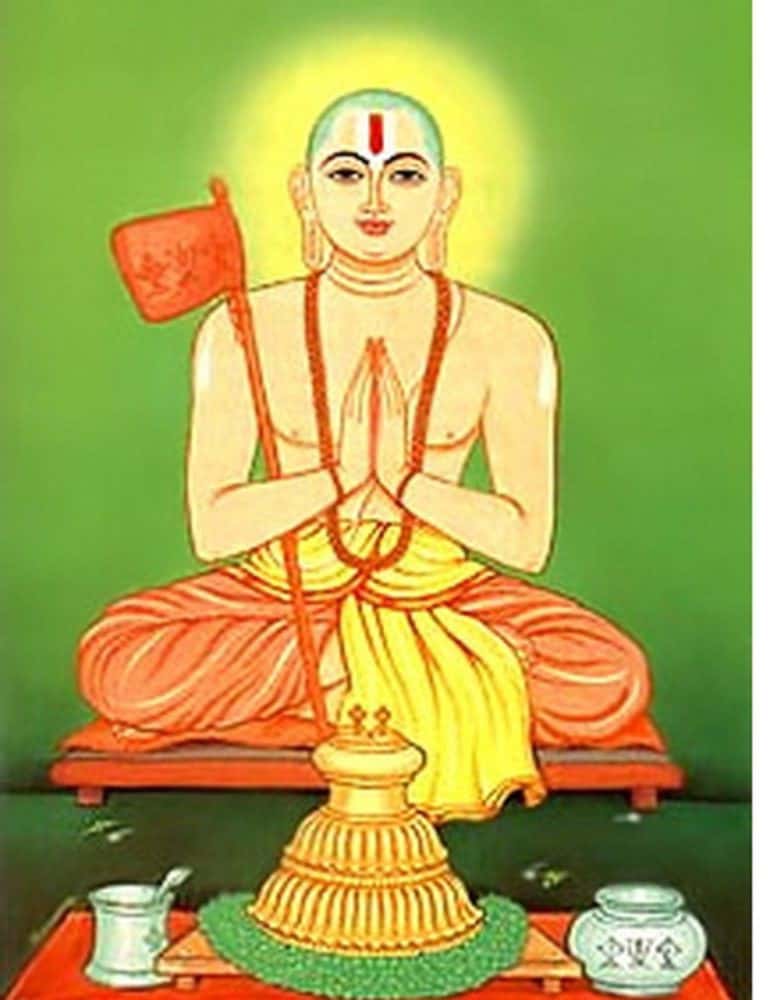
Kumārila Bhaṭṭa (fl. roughly 700) was a Hindu philosopher and a scholar of Mimamsa school of philosophy from early medieval India. He is famous for many of his various theses on Mimamsa, such as Mimamsaslokavarttika. Bhaṭṭa was a staunch believer in the supreme validity of Vedic injunction, a great champion of Pūrva-Mīmāṃsā and a confirmed ritualist. The Varttika is mainly written as a subcommentary of Sabara’s commentary on Jaimini’s Purva Mimamsa Sutras. His philosophy is classified by some scholars as existential realism.Scholars differ as regards Kumārila Bhaṭṭa’s views on a personal God. For example, Manikka Vachakar believed that Bhaṭṭa promoted a personal God (saguna brahman), which conflicts with the Mīmāṃsā school. In his Varttika, Kumārila Bhaṭṭa goes to great lengths to argue against the theory of a creator God and held that the actions enjoined in the Veda had definite results without an external interference of Deity.
Read More About Kumārila Bhaṭṭa / Source
Chaitanya Mahaprabhu
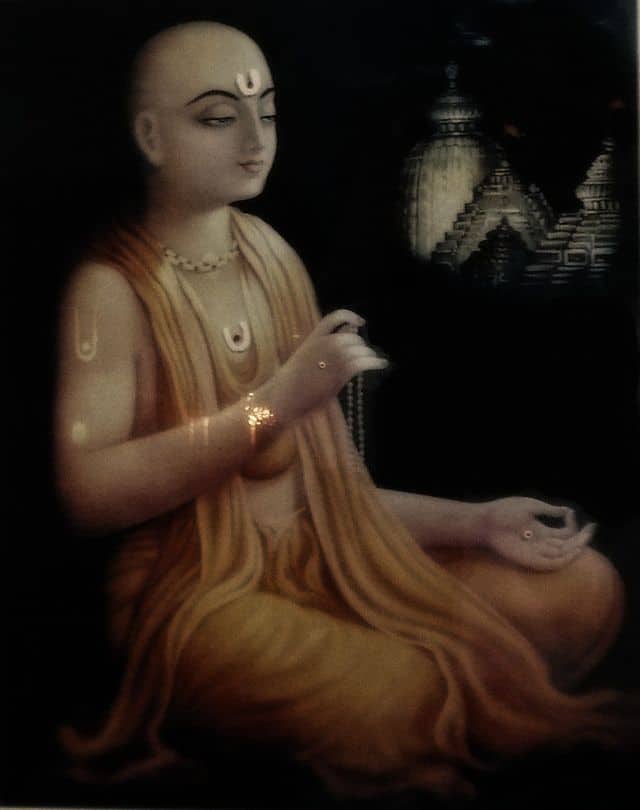
Shri Krishna Chaitanya Mahaprabhu ( a.k.a. Mahāprabhu or “Great Lord”) was a 15th century Indian saint and founder of Achintya Bheda Abheda. Devotees consider him an incarnation of the god Krishna. Chaitanya Mahaprabhu’s mode of worshipping Krishna with ecstatic song and dance had a profound effect on Vaishnavism in Bengal. He was also the chief proponent of the Vedantic philosophy of Achintya Bheda Abheda. Mahaprabhu founded Gaudiya Vaishnavism (a.k.a. Brahma-Madhva-Gaudiya Sampradaya). He expounded Bhakti yoga and popularized the chanting of the Hare Krishna Maha-mantra. He composed the Shikshashtakam (eight devotional prayers).He is sometimes called Gauranga or Gaura due to his molten gold like fair complexion. His birthday is celebrated as Gaura-purnima. He is also called Nimai due to him being born underneath a Neem tree.
Read More About Chaitanya Mahaprabhu / Source
Dev guru brihaspati
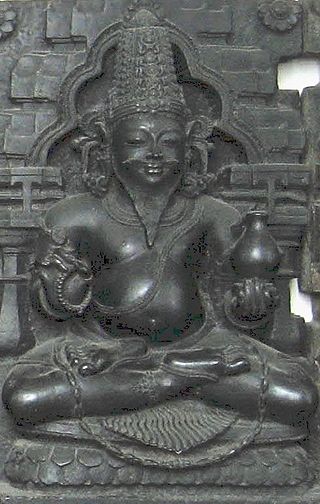
Jupiter is mentioned in many places. He was an ascetic sage. They have also been called ‘sharpshring’. Their weapons were bow, arrow and gold, and horses of copper color used to plow in these chariots. Jupiter is said to be extremely powerful. He had cows rescued by Indra. The Martians used to pray for him because of Ajay in the war. He was a great philanthropist who rescued a man of purity from adversities. They have also been called Grihapurohit, without them Yagyayagas are not successful.
Read More About Dev guru brihaspati / Source
Dignāga

Dignāga (a.k.a. Diṅnāga, c. 480 – c. 540 CE) was an Indian Buddhist scholar and one of the Buddhist founders of Indian logic (hetu vidyā). Dignāga’s work laid the groundwork for the development of deductive logic in India and created the first system of Buddhist logic and epistemology (Pramana).According to Georges B. Dreyfus, his philosophical school brought about an Indian “epistemological turn” and became the “standard formulation of Buddhist logic and epistemology in India and Tibet.” Dignāga’s thought influenced later Buddhist philosophers like Dharmakirti and also Hindu thinkers of the Nyaya school. Dignāga’s epistemology accepted only “perception” (pratyaksa) and “inference” (anumāṇa) are valid instruments of knowledge and introduced the widely influential theory of “exclusion” (apoha) to explain linguistic meaning. His work on language, inferential reasoning and perception were also widely influential among later Indian philosophers. According to Richard P. Hayes “some familiarity with Dinnaga’s arguments and conclusions is indispensable for anyone who wishes to understand the historical development of Indian thought.”Dignāga was born in Simhavakta near Kanchipuram and very little is known of his early years, except that he took Nagadatta of the Pudgalavada school as his spiritual preceptor, before being expelled and becoming a student of Vasubandhu.
Read More About Dignāga / Source
Gadadhara Bhattacharya
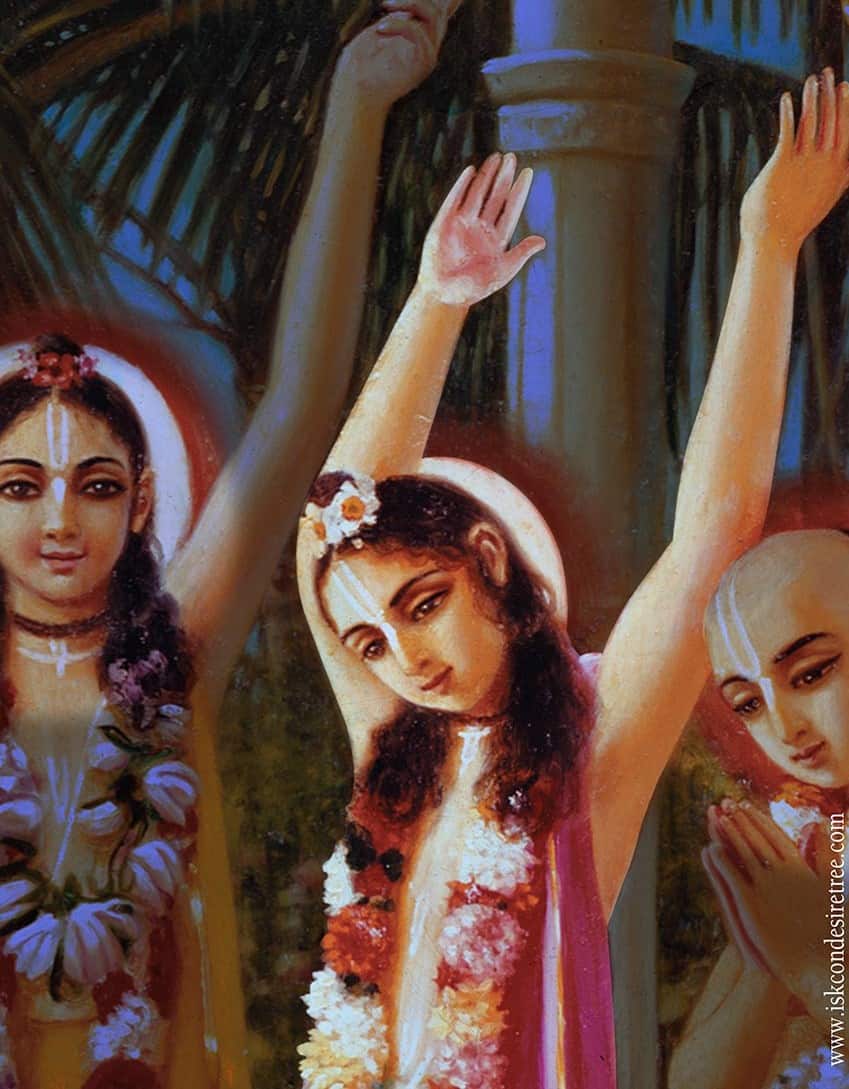
Gadadhar Bhattacharya (1650) was a celebrated Nayyavik of Navya Nyaya. He was a resident of Navadwip. He has written a very elaborate and sophisticated commentary on Raghunath’s “Diddhiti” which is famous as “Gadadhari”. Etymology, Shaktism, etc. are his many fundamental texts, from which the ingenuity of his original thinking is known. He is considered to be present in the 17th century.
Read More About Gadadhara Bhattacharya / Source
Vallabhacharya
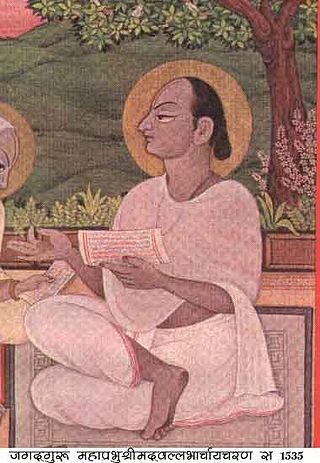
Vallabhacharya (1479–1531 CE), also known as Vallabha, was an Indian Telugu philosopher who founded the Krishna-centered Pushti sect of Vaishnavism in the Braj region of India, and the philosophy of Shuddha advaita (Pure Nondualism).Vallabha was born in a Telugu family that had been living in Varanasi, who escaped to Champaran of Chhattisgarh state while expecting Vallabha, during the turbulent times of Hindu-Muslim conflicts in the late 15th century. Vallabha studied the Vedas and the Upanishads as a child, then travelled throughout the Indian subcontinent over 20 years. He became one of the important leaders of the devotional Bhakti movement. Vallabhacharya’s mother was Illamma who was the daughter of a family priest serving the rulers of the empire of Vijayanagara. The hagiographies written by his followers, just like those for other Bhakti leaders, claim that he won many philosophical debates against the followers of Ramanuja, Madhvacharya and others, had visions and miracles.He is the Acharya and Guru within the Pushti sub-tradition, which he founded after his own interpretation of the Vedanta philosophy.
Read More About Vallabhacharya / Source
Guru Nanak

Guru Nanak (born as Nanak on 15 April 1469 – 22 September 1539), also referred to as Baba Nanak (‘father Nanak’), was the founder of Sikhism and is the first of the ten Sikh Gurus. His birth is celebrated worldwide as Guru Nanak Gurpurab on Katak Pooranmashi (‘full-moon of the Katak’), i.e. October–November.
Nanak is said to have travelled far and wide across Asia teaching people the message of ik onkar (ੴ, ‘one God’), who dwells in every one of his creations and constitutes the eternal Truth. With this concept, he would set up a unique spiritual, social, and political platform based on equality, fraternal love, goodness, and virtue.Nanak’s words are registered in the form of 974 poetic hymns, or shabda, in the holy text of Sikhism, the Guru Granth Sahib, with some of the major prayers being the Japji Sahib (jap, ‘to recite’; ji and sahib are suffixes signifying respect); the Asa di Var (‘ballad of hope’); and the Sidh Gohst (‘discussion with the Siddhas’). It is part of Sikh religious belief that the spirit of Nanak’s sanctity, divinity, and religious authority had descended upon each of the nine subsequent Gurus when the Guruship was devolved on to them.
Read More About Guru Nanak / Source
Saṃjaya Vairāṣṭrikaputra (Sañjaya Belaṭṭhaputta)
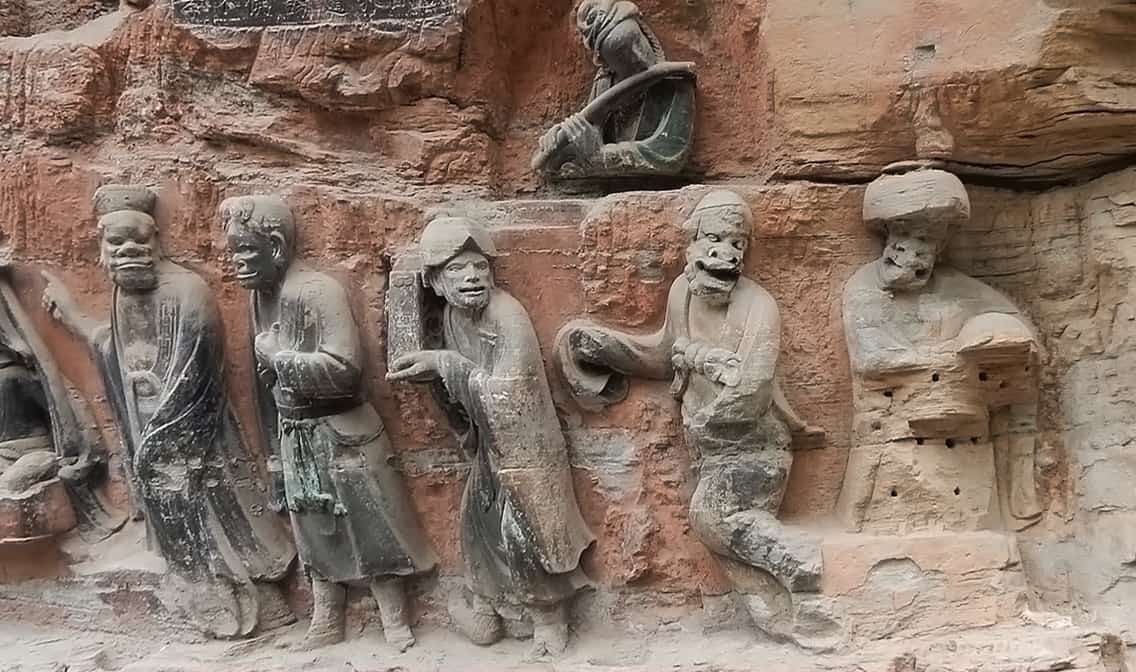
Sañjaya Belaṭṭhaputta was the sixth and final teacher referenced by Ajatashatru. Belaṭṭhaputta did not provide Ajatashatru with a clear answer to his question one way or another, leading some scholars to align him with Ajñana, an agnostic school of Indian philosophy which held that metaphysical knowledge was impossible to obtain.
Read More About Saṃjaya Vairāṣṭrikaputra (Sañjaya Belaṭṭhaputta) / Source
Dirghatamas
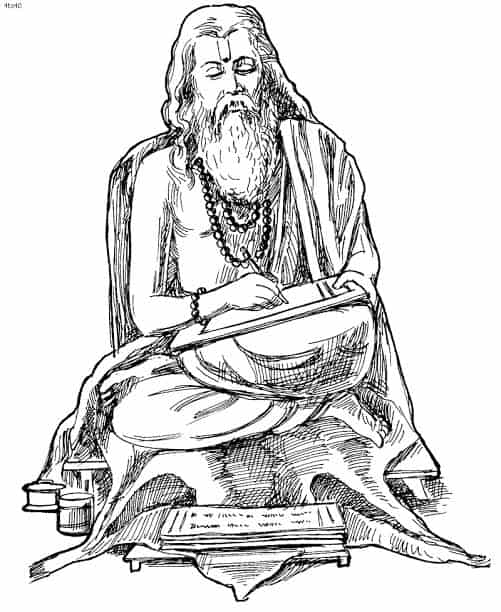
Dīrghatamas was an ancient sage well known for his philosophical verses in the RgVeda. He was author of Suktas (hymns) 140 to 164 in the first Mandala (section) of the RgVeda.However there was another Dirghatamas named Dirghatama Mamteya. Dirghatamas was one of the Angirasa Rishis, the oldest of the Rishi families, and regarded as brother to the Rishi Bharadvaja, who is the seer of the sixth Mandala of the Rig Veda. Dirghatamas is also the chief predecessor of the Gotama family of Rishis that includes Kakshivan, Gautam Maharishi, Nodhas and Vamadeva(seer of the fourth Mandala of the Rig Veda), who along with Dirghatamas account for almost 150 of the 1000 hymns of the Rig Veda. Anga, Vanga, Kalinga, Pundra and Suhma, Ondra were also the sons of Dirghatamas through Raja Bali’s wife Sudhesana. His own verses occur frequently in many Vedic texts, a few even in the Upanishads.
Read More About Dirghatamas / Source
Bhartṛhari
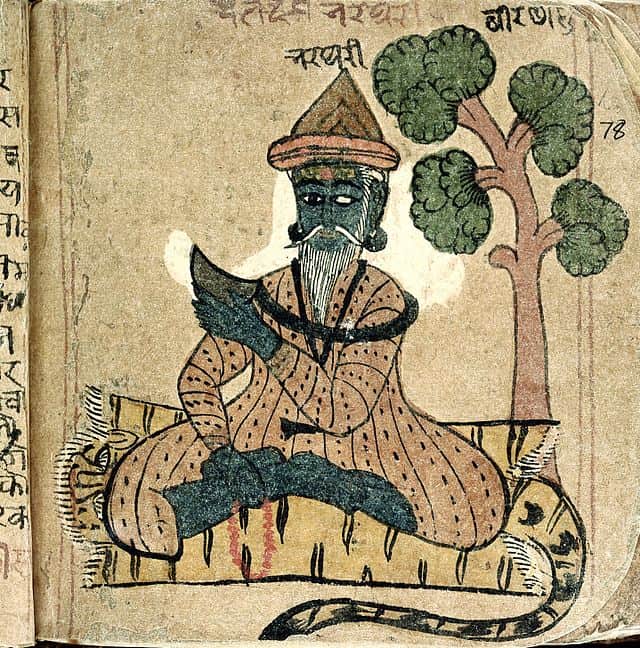
Bhartṛhari ( also romanised as Bhartrihari; fl. c. 5th century CE) is a Sanskrit writer to whom are normally ascribed two influential Sanskrit texts: the Vākyapadīya, on Sanskrit grammar and linguistic philosophy, a foundational text in the Indian grammatical tradition, explaining numerous theories on the word and on the sentence, including theories which came to be known under the name of Sphoṭa; in this work Bhartrhari also discussed logical problems such as the liar paradox and a paradox of unnameability or unsignfiability which has become known as Bhartrhari’s paradox, and the Śatakatraya, a work of Sanskrit poetry, comprising three collections of about 100 stanzas each; it may or may not be by the same author who composed the two mentioned grammatical works.In the medieval tradition of Indian scholarship, it was assumed that both texts were written by the same person.
Modern philologists were sceptical of this claim, owing to an argument that dated the grammar to a date subsequent to the poetry. Since the 1990s, however, scholars have agreed that both works may indeed have been contemporary, in which case it is plausible that there was only one Bhartrihari who wrote both texts.Both the grammar and the poetic works had an enormous influence in their respective fields.
Read More About Bhartṛhari / Source
Atreya
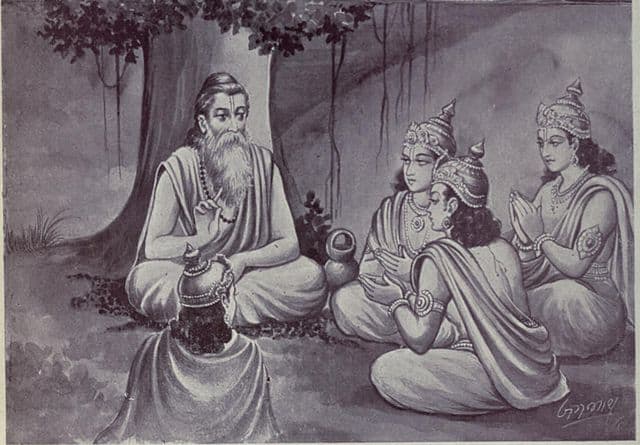
Atreya Rishi, or Atreya Punarvasu, was a descendant of Atri, one of the great Hindu sages (rishis) whose accomplishments are detailed in the Puranas. Sage Atreya was a renowned scholar of Ayurveda and six schools of early Ayurveda was founded based on his teachings. He is credited as the writer of Bhela Samhita, dating to a period of 6th century BCE. He is believed to have worked as the personal physician of King Nagnajita of Gandhara Kingdom, who finds mention in the Mahabharata. The original contents of Charakasamhita are credited to Atreya, which were in turn codified and edited by Agnivesha and Charaka. According to Surendranath Dasgupta, The old Ayurveda of Atreya-Charaka school probably has its root in the now extinct Caranavaidya branch of Atharvaveda.
Read More About Atreya / Source
Rabindranath Tagore
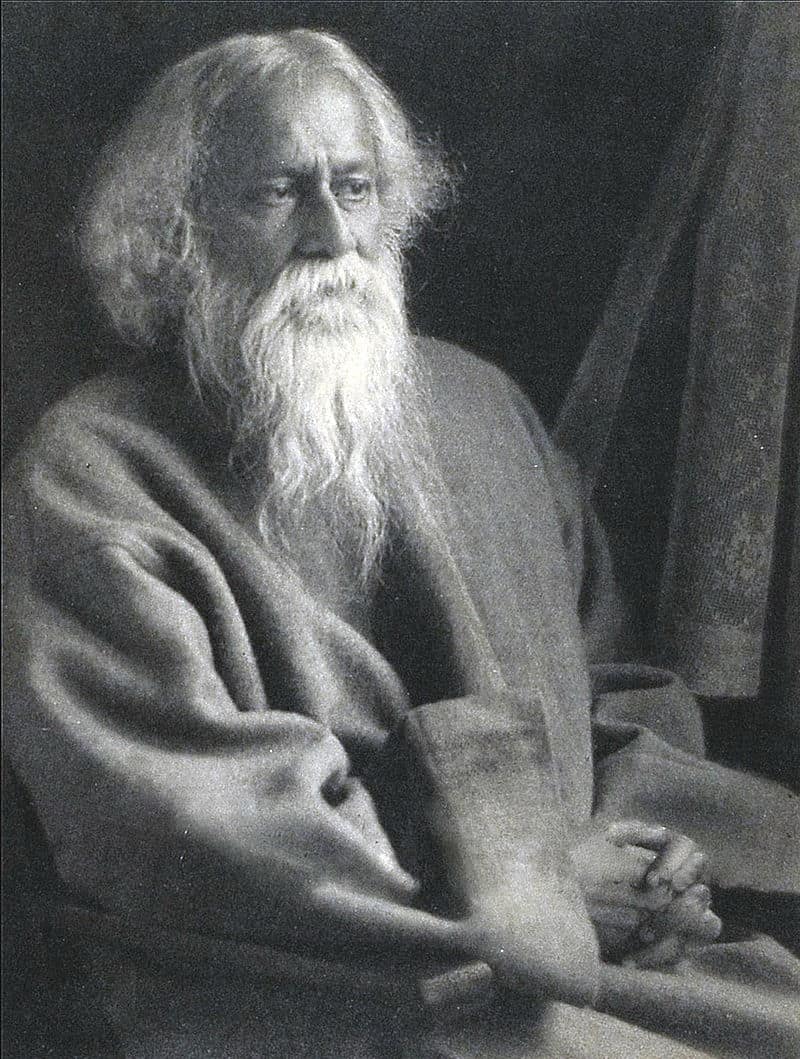
Rabindranath Tagore (born Robindronath Thakur, 7 May 1861 – 7 August 1941; sobriquet Gurudev, Kobiguru, Biswakobi) was a Bengali poet, writer, composer, philosopher and painter. He reshaped Bengali literature and music, as well as Indian art with Contextual Modernism in the late 19th and early 20th centuries. Author of the “profoundly sensitive, fresh and beautiful verse” of Gitanjali, he became in 1913 the first non-European as well as the first lyricist to win the Nobel Prize in Literature. Tagore’s poetic songs were viewed as spiritual and mercurial; however, his “elegant prose and magical poetry” remain largely unknown outside Bengal. He is sometimes referred to as “the Bard of Bengal”.A Bengali Brahmin from Calcutta with ancestral gentry roots in Burdwan district and Jessore, Tagore wrote poetry as an eight-year-old. At the age of sixteen, he released his first substantial poems under the pseudonym Bhānusiṃha (“Sun Lion”), which were seized upon by literary authorities as long-lost classics. By 1877 he graduated to his first short stories and dramas, published under his real name. As a humanist, universalist, internationalist, and ardent anti-nationalist, he denounced the British Raj and advocated independence from Britain. As an exponent of the Bengal Renaissance, he advanced a vast canon that comprised paintings, sketches and doodles, hundreds of texts, and some two thousand songs; his legacy also endures in the institution he founded, Visva-Bharati University.Tagore modernised Bengali art by spurning rigid classical forms and resisting linguistic strictures. His novels, stories, songs, dance-dramas, and essays spoke to topics political and personal. Gitanjali (Song Offerings), Gora (Fair-Faced) and Ghare-Baire (The Home and the World) are his best-known works, and his verse, short stories, and novels were acclaimed—or panned—for their lyricism, colloquialism, naturalism, and unnatural contemplation. His compositions were chosen by two nations as national anthems: India’s “Jana Gana Mana” and Bangladesh’s “Amar Shonar Bangla”. The Sri Lankan national anthem was inspired by his work.
Read More About Rabindranath Tagore / Source
Anandavardhana
Ānandavardhana (c. 820–890 CE) was the author of Dhvanyāloka, or A Light on Suggestion (dhvani), a work articulating the philosophy of “aesthetic suggestion” (dhvani, vyañjanā). The philosopher Abhinavagupta (c. 950 – 1016 CE) wrote an important commentary on it, the Locana, or The Eye.
Ānandavardhana is credited with creating the dhvani theory. He wrote that dhvani (meaning sound, or resonance) is the “soul” or “essence” (ātman) of poetry (kavya).” “When the poet writes,” said Ānandavardhana, “he creates a resonant field of emotions.” To understand the poetry, the reader or hearer must be on the same “wavelength.” The method requires sensitivity on the parts of the writer and the reader. The complete Dhvanyāloka together with Abhinavagupta’s commentary on it has been translated into English by the eminent Sanskritist Daniel H.H. Ingalls and his collaborators.
Read More About Anandavardhana / Source
Srila Prabhupada
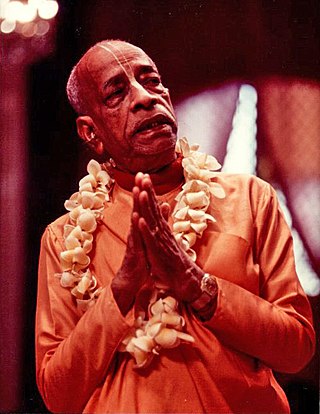
Abhay Charanaravinda Bhaktivedanta Swami ( 1 September 1896 – 14 November 1977) or Srila Prabhupada, born Abhay Charan De, was an Indian spiritual teacher and the founder-acharya (preceptor) of the International Society for Krishna Consciousness (ISKCON), commonly known as the “Hare Krishna Movement”. Members of the ISKCON movement view Bhaktivedanta Swami as a representative and messenger of Krishna Chaitanya.Born in a Kayastha family in Kolkata (then called Calcutta), he was educated at the Scottish Church College there. Before adopting the life of a novice renunciate (vanaprastha) in 1950, he was married with children and owned a small pharmaceutical business. In 1959, he took a vow of renunciation (sannyasa) and started writing commentaries on Vaishnava scriptures. In his later years, as a travelling Vaishnava monk, he became an influential communicator of Gaudiya Vaishnava theology to India and specifically to the West through his leadership of ISKCON, founded in 1966. As the founder of ISKCON, he “emerged as a major figure of the Western counterculture, initiating thousands of young Americans.”
Read More About Srila Prabhupada / Source
Patanjali
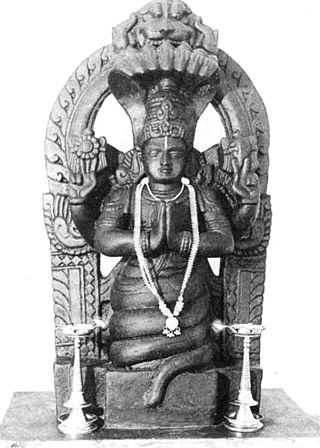
Patañjali was a sage in India, thought to be the author of a number of Sanskrit works. The greatest of these are the Yoga Sutras, a classical yoga text. There is doubt as to whether the sage Patañjali is the author of all the works attributed to him as there are a number of known historical authors of the same name. A great deal of scholarship has been devoted over the last century to the issue of the historicity or identity of this author or these authors.Amongst the more important authors called Patañjali are:
The author of the Mahābhāṣya, an ancient treatise on Sanskrit grammar and linguistics, based on the Aṣṭādhyāyī of Pāṇini. This Patañjali’s life is dated to mid 2nd century BCE by both Western and Indian scholars. This text was titled as a bhasya or “commentary” on Kātyāyana-Pāṇini’s work by Patanjali, but is so revered in the Indian traditions that it is widely known simply as Mahā-bhasya or “Great commentary”.
Read More About Patanjali / Source
Pt Shri Ram Sharma Acharya

Shriram Sharma (20September 1911– 2 June 1990) was a social reformer, a philosopher, and founder of “All World Gayatri Pariwar”, which has its headquarters at Shantikunj, Haridwar, India. He is known as Pandit Shriram Sharma Acharya by the members of the Gayatri Pariwar.
He pioneered the revival of spirituality and creative integration of the modern and ancient sciences and religion. Served restlessly from teenage till his last breath (He took Nirvana) . Pt. Shri Ram Sharma Acharya popularly known as gurudev by his disciples set forth an example before the whole world of enlightenment of most one’s soul by practicing the world’s ancient found literature’s most famous Sanskrit Chant -“THE GAYATRI MANTRA”
Read More About Pt Shri Ram Sharma Acharya / Source
Aruni (Udālaka)
Aruni (fl. c. 8th century BCE), also referred to as Uddalaka or Uddalaka Aruni or Uddalaka Varuni, is a revered Vedic sage of Hinduism. He is mentioned in many Vedic era Sanskrit texts, and his philosophical teachings are among the center piece in the Brihadaranyaka Upanishad and Chandogya Upanishad, two of the oldest Upanishadic scriptures. A famed Vedic teacher, Aruni lived a few centuries before the Buddha, and attracted students from far regions of the Indian subcontinent; some of his students such as Yajnavalkya are also highly revered in the Hindu traditions. Both Aruni and Yajnavalkya are among the most frequently mentioned Upanishadic teachers in Hinduism.According to Ben-Ami Scharfstein, a professor emeritus of Philosophy at Tel Aviv University, Uddalaka Aruni was one of the first philosophers in recorded history. In the Chandogya Upanishad Aruni asks metaphysical questions concerning the nature of reality and truth, observes constant change, and asks if there is something that is eternal and unchanging. From these questions, embedded in a dialogue with his son, he presents the concept of Ātman (soul, Self) and universal Self.
Read More About Aruni (Udālaka) / Source
Srila Jiva Goswami
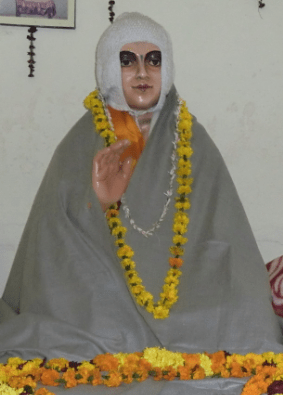
Jiva Goswami ( c. 1513 – c. 1598) was an Indian philosopher and saint from the Gaudiya Vaishnava school of Vedanta tradition, producing a great number of philosophical works on the theology and practice of Bhakti yoga, Vaishnava Vedanta and associated disciplines. He is known as one of the Six Goswamis of Vrindavan and was the nephew of the two leading figures, Rupa Goswami and Sanatana Goswami.
Read More About Srila Jiva Goswami / Source
Champat Rai Jain
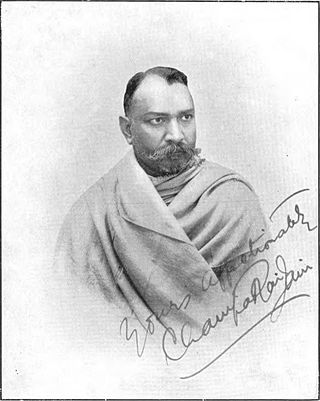
Champat Rai Jain (1867–1942) was a Digambara Jain born in Delhi and who studied and practiced law in England. He became an influential Jainism scholar and comparative religion writer between 1910s and 1930s who translated and interpreted Digambara texts. In early 1920s, he became religiously active in India and published essays and articles defending Jainism against misrepresentations by colonial era Christian missionaries, contrasting Jainism and Christianity. He founded Akhil Bharatvarsiya Digambara Jain Parisad in 1923 with the aim of activist reforms and uniting the south Indian and north Indian Digambara community. He visited various European countries to give lectures on Jainism. He was conferred with the title Vidya-Varidhi (lit. Ocean of Wisdom) by Bharata Dharma Mahamandal (The India-Religious Association).
Read More About Champat Rai Jain / Source
Shrimad Rajchandra
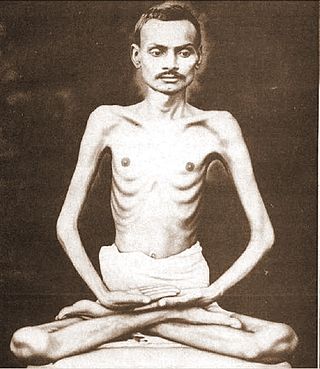
Shrimad Rajchandra (11 November 1867 – 11 April 1901) was a Jain poet, mystic, philosopher, scholar and reformer. Born near Morbi, he claimed to have recollection of his past lives at the age of seven. He performed Avadhāna, a memory retention and recollection test that gained him popularity, but he later discouraged it in favour of his spiritual pursuits. He wrote much philosophical poetry including Atma Siddhi. He also wrote many letters and commentaries and translated some religious texts. He is best known for his teachings on Jainism and his spiritual guidance to Mahatma Gandhi.
Read More About Shrimad Rajchandra / Source
Valimiki
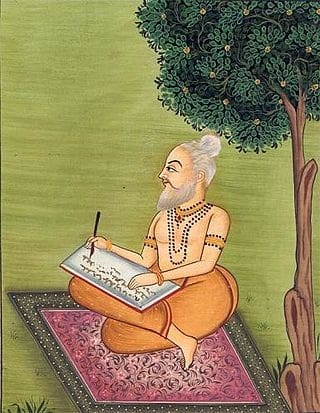
Valmiki (; Sanskrit: वाल्मीकि Vālmīki [ʋaːlmiːkɪ]) is celebrated as the harbinger-poet in Sanskrit literature. The epic Ramayana, dated variously from the 5th century BCE to first century BCE, is attributed to him, based on the attribution in the text itself. He is revered as Ādi Kavi, the first poet, author of Ramayana, the first epic poem.
The Ramayana, originally written by Valmiki, consists of 24,000 shlokas and seven cantos (kaṇḍas). The Ramayana is composed of about 480,002 words, being a quarter of the length of the full text of the Mahabharata or about four times the length of the Iliad. The Ramayana tells the story of a prince, Rama of the city of Ayodhya in the Kingdom of Kosala, whose wife Sita is abducted by Ravana, the demon-king (Asura) of Lanka. Valmiki’s Ramayana is dated variously from 500 BCE to 100 BCE or about co-eval with early versions of the Mahabharata. As with many traditional epics, it has gone through a process of interpolations and redactions, making it impossible to date accurately.
British satirist Aubrey Menen says that Valmiki was “recognized as a literary genius,” and thus was considered, “an outlaw,” presumably because of his “philosophic scepticism,” as part of an “Indian Enlightenment” period. Valmiki is also quoted as being the contemporary of Rama. Menen claims Valmiki is “the first author in all history to bring himself into his own composition.”
Read More About Valimiki / Source
B. R. Ambedkar
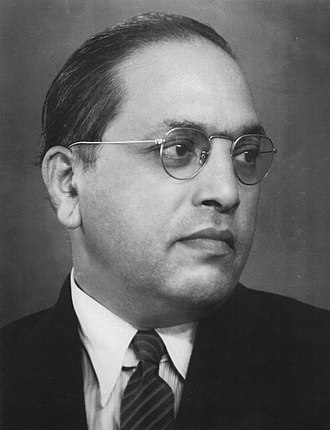
Bhimrao Ramji Ambedkar (14 April 1891 – 6 December 1956), also known as Babasaheb Ambedkar, was an Indian scholar, jurist, economist, politician and social reformer, who inspired the Dalit Buddhist movement and campaigned against social discrimination towards the untouchables (Dalits), while also supporting the rights of women and labour. He was independent India’s first Minister of Law and Justice, the chief architect of the Constitution of India, and a founding father of the Republic of India.
Ambedkar was a prolific student, earning doctorates in economics from both Columbia University and the University of London, and gaining reputation as a scholar for his research in law, economics and political science. In his early career, he was an economist, professor, and lawyer. His later life was marked by his political activities; he became involved in campaigning and negotiations for India’s independence, publishing journals, advocating political rights and social freedom for Dalits, and contributing significantly to the establishment of the state of India. In 1956, he converted to Buddhism, initiating mass conversions of Dalits.In 1990, the Bharat Ratna, India’s highest civilian award, was posthumously conferred upon Ambedkar. Ambedkar’s legacy includes numerous memorials and depictions in popular culture.
Read More About B. R. Ambedkar / Source
Parashara Rishi

Parāśara was a maharshi and the author of many ancient Indian texts. He is accredited as the author of the first Purana, the Vishnu Purana, before his son Vyasa wrote it in its present form. He was the grandson of Vasishtha, the son of Śakti Maharṣi, and the father of Vyasa. There are several texts which give reference to Parashara as an author/speaker. Modern scholars believe that there were many individuals who used this name throughout time whereas others assert that the same Parashara taught these various texts and the time of writing them varied. The actual sage himself never wrote the texts; the various texts attributed to him are given in reference to Parashara being the speaker to his student. He is the third member of the Ṛṣi Paramparā of the Advaita Guru Paramparā.
Read More About Parashara Rishi / Source
Raikva
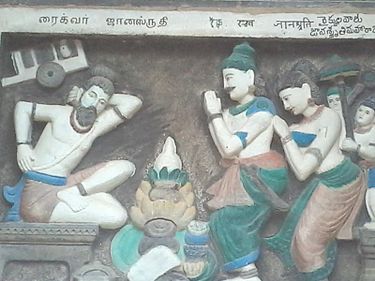
Raikva, the poor unknown cart-driver, appears in Chapter IV of the Chandogya Upanishad of Muktika canon where it is learnt that he knew That which was knowable and needed to be known, he knew That from which all this had originated. Along with Uddalaka, Prachinshala, Budila, Sarkarakshaya and Indradyumna, who respectively held earth, heaven, water, space and air to be the substrata of all things, and many others, Raikva was one of the leading Cosmological and Psychological philosophers of the Upanishads. He imparted the Samvarga Vidya to King Janasruti. Like Indradyumna he too held air to be substratum of all things.
King Janasruti, the ruler of Mahavrisha, was famous for his philanthropy and charity who was proud of what he gave away as gifts and in charity. He had come to know about Raikva by chance from the swans, who already impressed by his deeds of charity, had seen him, and whose conversation he happened to overhear.
Read More About Raikva / Source
Kundakunda
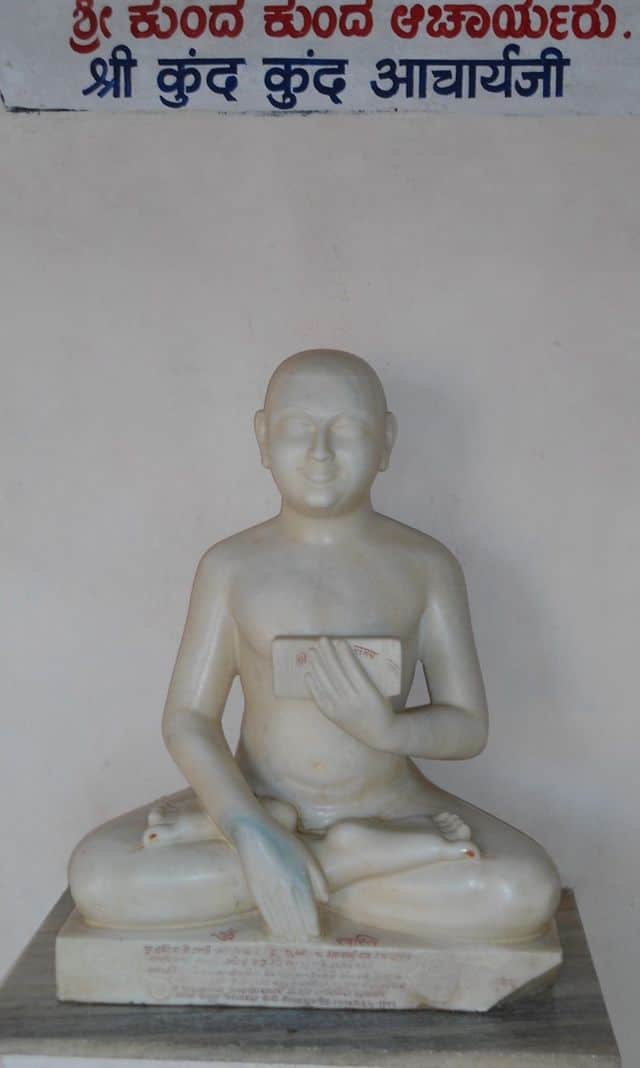
Kundakunda was a Digambara Jain monk and philosopher, who likely lived in the 2nd CE century CE or later.He authored many Jain texts such as: Samayasara, Niyamasara, Pancastikayasara, Pravachanasara, Astapahuda and Barasanuvekkha. He occupies the highest place in the tradition of the Digambara Jain acharyas. All Digambara Jains say his name before starting to read the scripture. He spent most of his time at Ponnur Hills, Tamil Nadu and later part of life at Kundadri, Shimoga, Karnataka,
Read More About Kundakunda / Source
Kātyāyana
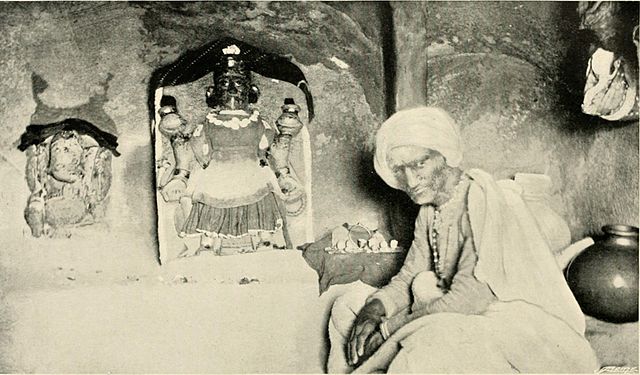
Kātyāyana also spelled as Katyayana (c. 2nd century BC) was a Sanskrit grammarian, mathematician and Vedic priest who lived in ancient India. According to some legends, he was born in the Katya lineage originating from Vishwamitra, thus called Katyayana. The Kathāsaritsāgara mentions Katyayana as another name of Vararuchi, a re-incarnation of Lord Shiva’s gana or follower Pushpadanta. The story also mentions him learning grammar from Shiva’s son Kartikeya which is corroborated in the Garuda Purana where Kartikeya (also called Kumara) teaches Katyayana the rules of grammar in a way that it could be understood even by children.
Read More About Kātyāyana / Source
Nachiketa
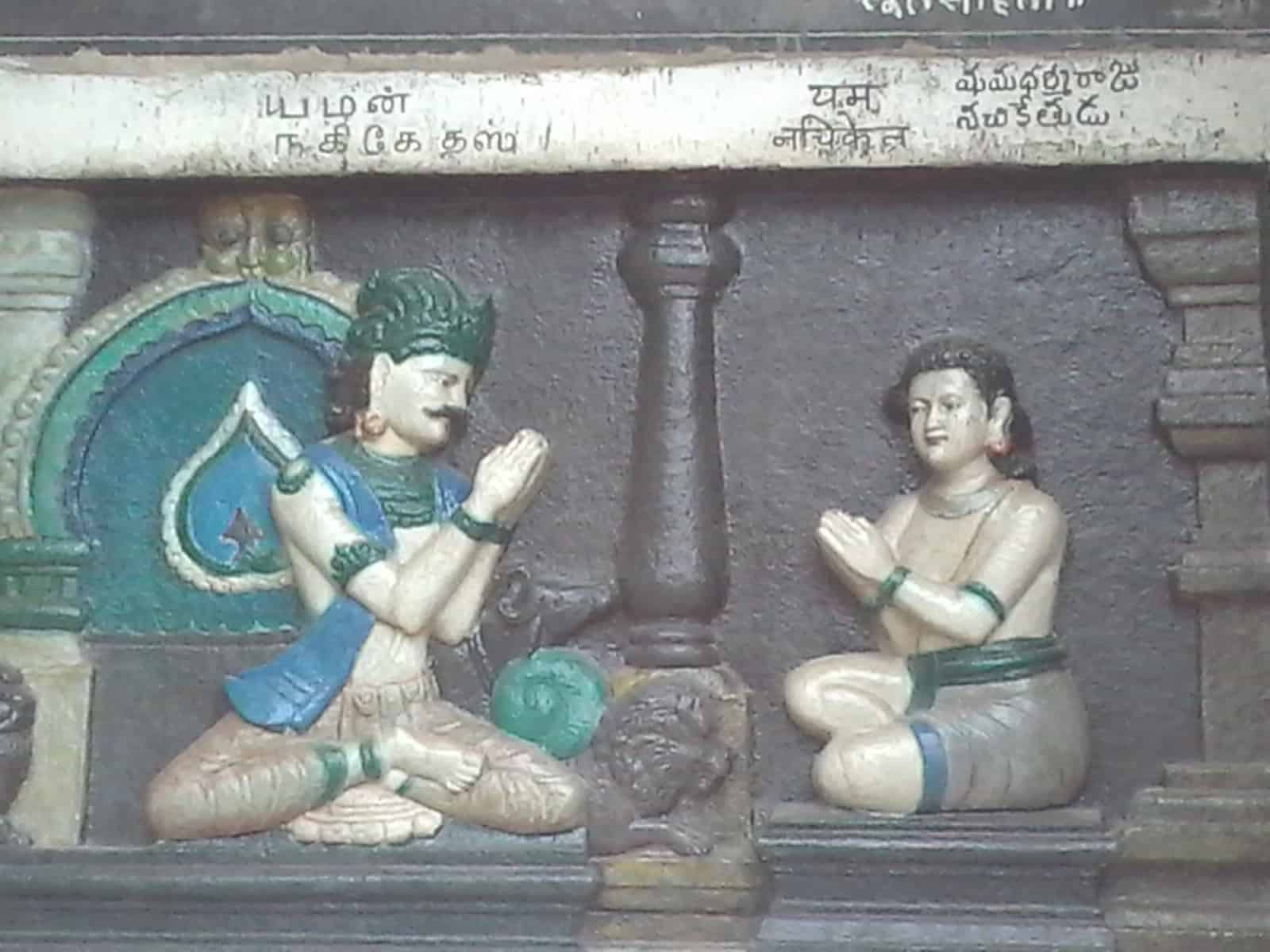
Nachiketa or sometimes even Nachiketan (Sanskrit: नचिकेतन्) was the son of the sage Vājashravas. He is the child protagonist in an ancient Indian story about the nature of the atman (self). The story is told in the Katha Upanishad (c. 9th century BCE), though the name has several earlier references. He was taught self-knowledge, the knowledge about atman (self) and Brahman (ultimate reality), by the Lord Yama, the Dharmaraja. Nachiketa is noted for his rejection of material desires which are ephemeral, and for his single-minded pursuit of the path of realizing salvation/Moksha i.e. self-knowledge.
Read More About Nachiketa / Source
Virchand Gandhi
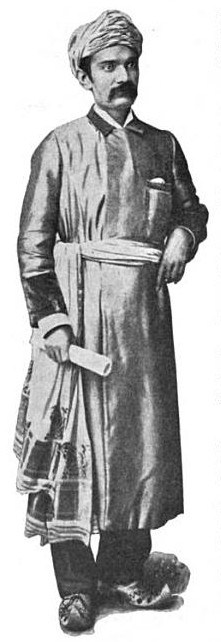
Virachand Raghavji Gandhi (25 August 1864 – 7 August 1901) was a Jain scholar who represented Jainism at the first World Parliament of Religions in 1893. A barrister by profession, he worked to defend the rights of Jains, and wrote and lectured extensively on Jainism, other religions, and philosophy.
Read More About Virchand Gandhi / Source
Gaudapadacharya
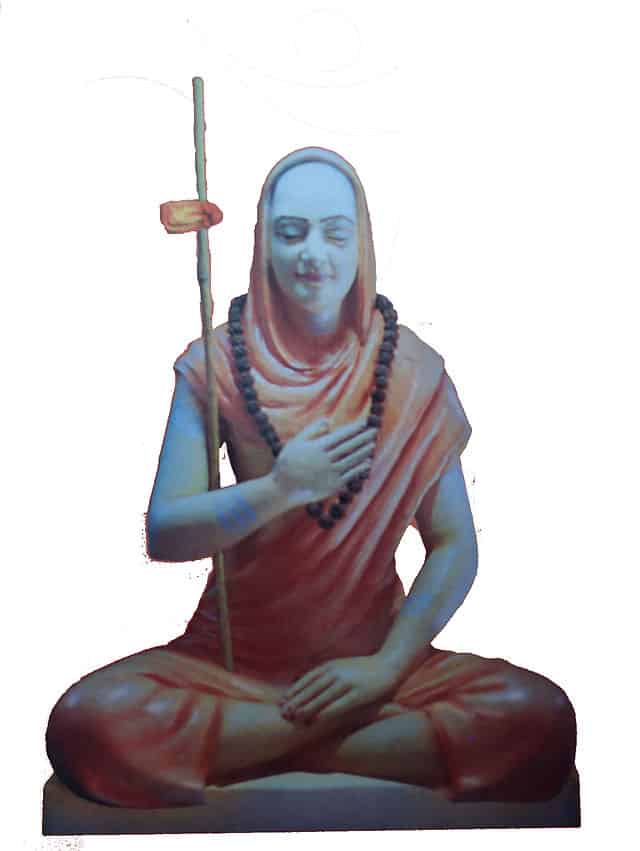
Gauḍapāda (fl. c. 6th century CE), also referred as Gauḍapādācārya (“Gauḍapāda the Teacher”), was an early medieval era Hindu philosopher and scholar of the Advaita Vedanta school of Hindu philosophy. While details of his biography are uncertain, his ideas inspired others such as Adi Shankara who called him a Paramaguru (highest teacher).Gaudapada was the author or compiler of the Māṇḍukya Kārikā, also known as Gaudapada Karika. The text consists of four chapters (also called four books), of which Chapter Four uses Buddhist terminology thereby showing it was influenced by Buddhism. However, doctrinally Gaudapada’s work is Hindu, and not Buddhist. The first three chapters of Gaudapada’s text have been influential in the Advaita Vedanta tradition. Parts of the first chapter that include the Mandukya Upanishad have been considered a valid scriptural source by the Dvaita and Vishistadvaita schools of Vedanta.
Read More About Gaudapadacharya / Source
Prabhākara
Prabhākara (active c. 6th century) was an Indian philosopher-grammarian in the Mīmāṃsā tradition of Kerala. One of the views of the Prābhākaras is that words do not directly designate meaning; any meaning that arises is because it is connected with other words (anvitābhidhāna, anvita = connected; abhidhāna = denotation). We know or learn the meaning of a word only by considering the sentential context which it appears; we learn such word meanings together with their possible semantic connections with other words. Sentence meanings are grasped directly, from perceptual and contextual cues, skipping the stage of grasping singly the individual word meanings (Matilal 1990:108).
Read More About Prabhākara / Source
Udyotakara
Udyotakara (or Uddyotakara) (c. 6th century CE) was a philosopher of the Nyaya school of Indian philosophy. Subandhu’s Vāsavadattā mentioned him as the rescuer of the Nyaya. He was a brahmin of Bharadvaja gotra and he belonged to the Pashupata sect. His philosophical treatise, the Nyāyavārttika was written to defend Vatsyayana’s Nyāyavāṣya against the criticisms made by Dignaga.
Read More About Udyotakara / Source
Bhāvaviveka
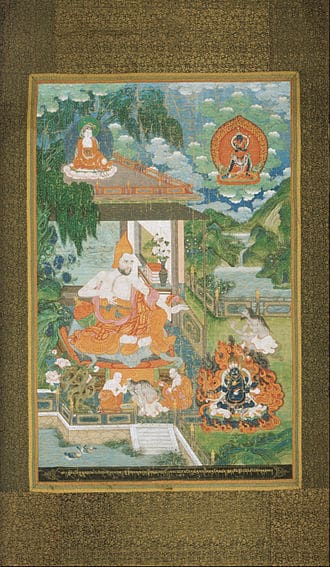
Bhāviveka, also called Bhavya or Bhāvaviveka ( c. 500 – c. 578) was a sixth-century Madhyamaka Buddhist. In Tibetan Buddhism Bhāviveka is regarded as the founder of the Svātantrika tradition of the Mādhyamaka school of Buddhism, which is seen as antagonistic to Prāsaṅgika Madhyamaka.
Read More About Bhāvaviveka / Source
Gangesha Upadhyaya
Gangesha Upadhyaya (first half of the 14th century) was an Indian philosopher and mathematician from the kingdom of Mithila. He established the Navya-Nyāya (“New Logic”) school. His Tattvacintāmaṇi (The Jewel of Thought on the Nature of Things), also known as Pramāṇacintāmaṇi (The Jewel of Thought on the Means of Valid Knowledge), is the basic text for all later developments. The logicians of this school were primarily interested in defining their terms and concepts related to non-binary logical categories.
Read More About Gangesha Upadhyaya / Source
Maharishi Mahesh Yogi

Maharishi Mahesh Yogi (born Mahesh Prasad Varma, 12 January 1918 – 5 February 2008) was an Indian guru, known for developing the Transcendental Meditation technique and for being the leader and guru of a worldwide organization that has been characterized in multiple ways including as a new religious movement and as non-religious. He became known as Maharishi (meaning “great seer”) and Yogi as an adult.Maharishi Mahesh Yogi became a disciple and assistant of Swami Brahmananda Saraswati, the Shankaracharya (spiritual leader) of Jyotirmath in the Indian Himalayas. The Maharishi credits Brahmananda Saraswati with inspiring his teachings. In 1955, the Maharishi began to introduce his Transcendental Deep Meditation (later renamed Transcendental Meditation) to India and the world. His first global tour began in 1958. His devotees referred to him as His Holiness, and because he often laughed in TV interviews he was sometimes referred to as the “giggling guru”.The Maharishi is reported to have trained more than 40,000 TM teachers, taught the Transcendental Meditation technique to “more than five million people” and founded thousands of teaching centres and hundreds of colleges, universities and schools, while TM websites report tens of thousands learned the TM-Sidhi programme.
Read More About Maharishi Mahesh Yogi / Source
Krishna Chandra Bhattacharya
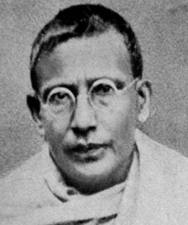
Krishna Chandra Bhattacharya, also known as K.C. Bhattacharya, (12 May 1875 – 11 December 1949) was a philosopher at the University of Calcutta known for his method of “constructive interpretation” through which relations and problematics of ancient Indian philosophical systems are drawn out and developed so that they can be studied like problems of modern philosophy. He was especially interested in the problematic of how the mind (or consciousness) creates an apparently material universe. Bhattacharya encouraged the idea of an immersive cosmopolitanism in which Indian systems of philosophy were modernized through assimilation and immersion rather than to through a blind imitation of European ideas.
Read More About Krishna Chandra Bhattacharya / Source
Dayananda Saraswati
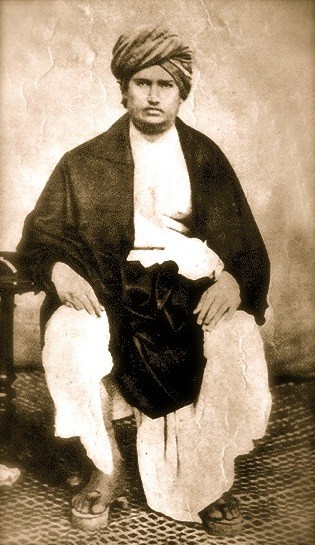
Maharshi Dayanand Saraswati (pronunciation ) (12 February 1824 – 30 October 1883) was an Indian philosopher, social leader and founder of the Arya Samaj, a reform movement of the Vedic dharma. He was the first to give the call for Swaraj as “India for Indians” in 1876, a call later taken up by Lokmanya Tilak. Denouncing the idolatry and ritualistic worship, he worked towards reviving Vedic ideologies. Subsequently, the philosopher and President of India, S. Radhakrishnan called him one of the “makers of Modern India”, as did Sri Aurobindo.Those who were influenced by and followed Dayananda included Rai Sahib Pooran Chand, Madam Cama, Pandit Lekh Ram, Swami Shraddhanand, Shyamji Krishna Varma, Kishan Singh, Bhagat Singh, Vinayak Damodar Savarkar, Bhai Parmanand, Lala Hardayal, Madan Lal Dhingra, Ram Prasad Bismil, Mahadev Govind Ranade, Ashfaq Ullah Khan, Mahatma Hansraj, Lala Lajpat Rai, and Yogmaya Neupane.He was a sanyasi (ascetic) from boyhood and a scholar. He believed in the infallible authority of the Vedas. Dayananda advocated the doctrine of Karma and Reincarnation. He emphasized the Vedic ideals of brahmacharya, including celibacy and devotion to God.
Among Dayananda’s contributions were his promoting of the equal rights for women, such as the right to education and reading of Indian scriptures, and his commentary on the Vedas from Vedic Sanskrit in Sanskrit as well as in Hindi.
Read More About Dayananda Saraswati / Source
Vācaspati Miśra
Vachaspati Mishra was a 9th century Indian hindu philosopher of the Advaita Vedanta tradition. He wrote so broadly on various branches of Indian philosophy that he was known as “one for whom all systems are his own”, or in Sanskrit, a sarva-tantra-sva-tantra. Vācaspati Miśra was a prolific scholar and his writings are extensive, including bhasya (commentaries) on key texts of almost every 9th-century school of Hindu philosophy with notes on non-Hindu or nāstika traditions such as Buddhism and Carvaka. He also wrote one non-commentary, Tattvabindu, or Drop of Truth, which focuses on Mīmāṃsā theories of sentence meaning. Some of his works are lost to history or yet to be found.Little is known about Vācaspati Miśra’s life, and the earliest text that has been dated with certainty is from 840 CE, and he was at least one generation younger than Adi Śaṅkara. However, an alternate date for the same text may be 976 CE, according to some scholars, a confusion that is based on whether Hindu Śaka or Vikrama era calendar is used for the dating purposes. His scholarship is revered in the Hindu tradition, which believes that he was a Maithil Brahmin from Andhra Tharhi Bihar. It is believed that the name of his most famous work “Bhamati” was inspired by his devout wife.
Read More About Vācaspati Miśra / Source
Ishvarkrishna
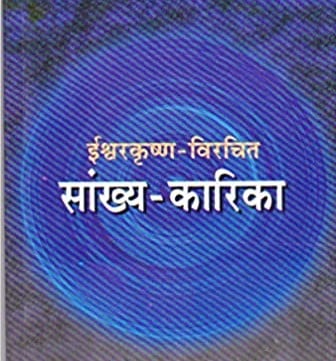
Ishvarakrishna was a famous numeric philosopher. Their era is disputed. According to Dr. Takakusu, his time should be around 450 AD and according to Dr. V. Smith should be around 240 AD. It is almost certain that he was a contemporary and antagonist of the guru of the Buddhist philosopher Vasubandhu. Ishvarakrishnika ‘Karika’ is the most ancient and popular treatise on Sankhya philosophy.
Read More About Ishvarkrishna / Source

